Suriname
Suriname
Suriname is a country in the north east of South America with a Dutch colonial past, vast rainforest and melting pot of cultural influences. We spent over a week exploring is capital city, Paramaribo as well as the Amazon region deep within the interior of the country.
Paramaribo
Paramaribo is the Dutch Colonial capital of Suriname, also called “the wooden city” for its dutch style wooden houses and buildings. It’s home to markets, former plantations and museums. It’s the perfect starting point to venture to the interior of the country or along the coast to nature reserves and the neighboring counties.
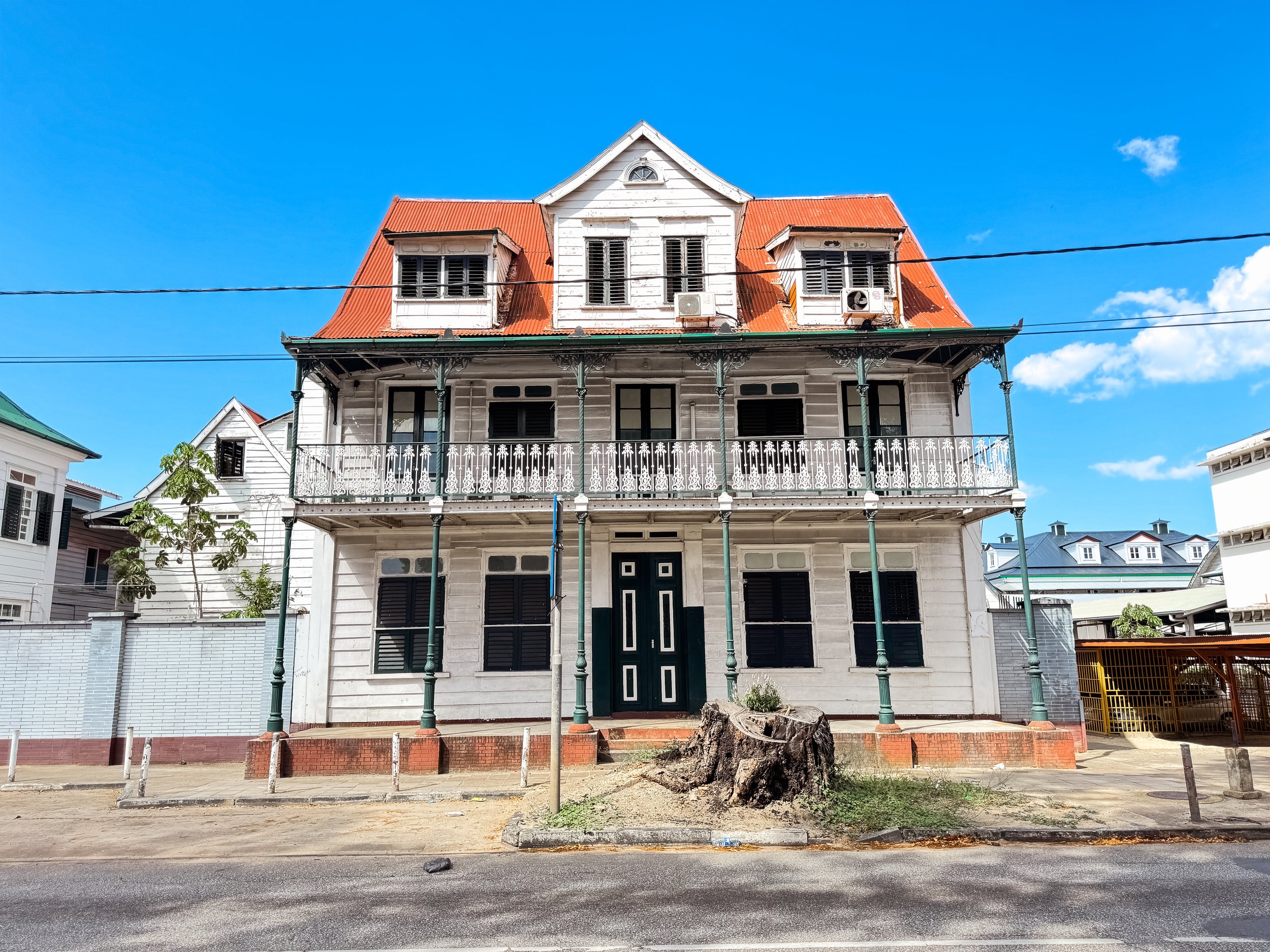
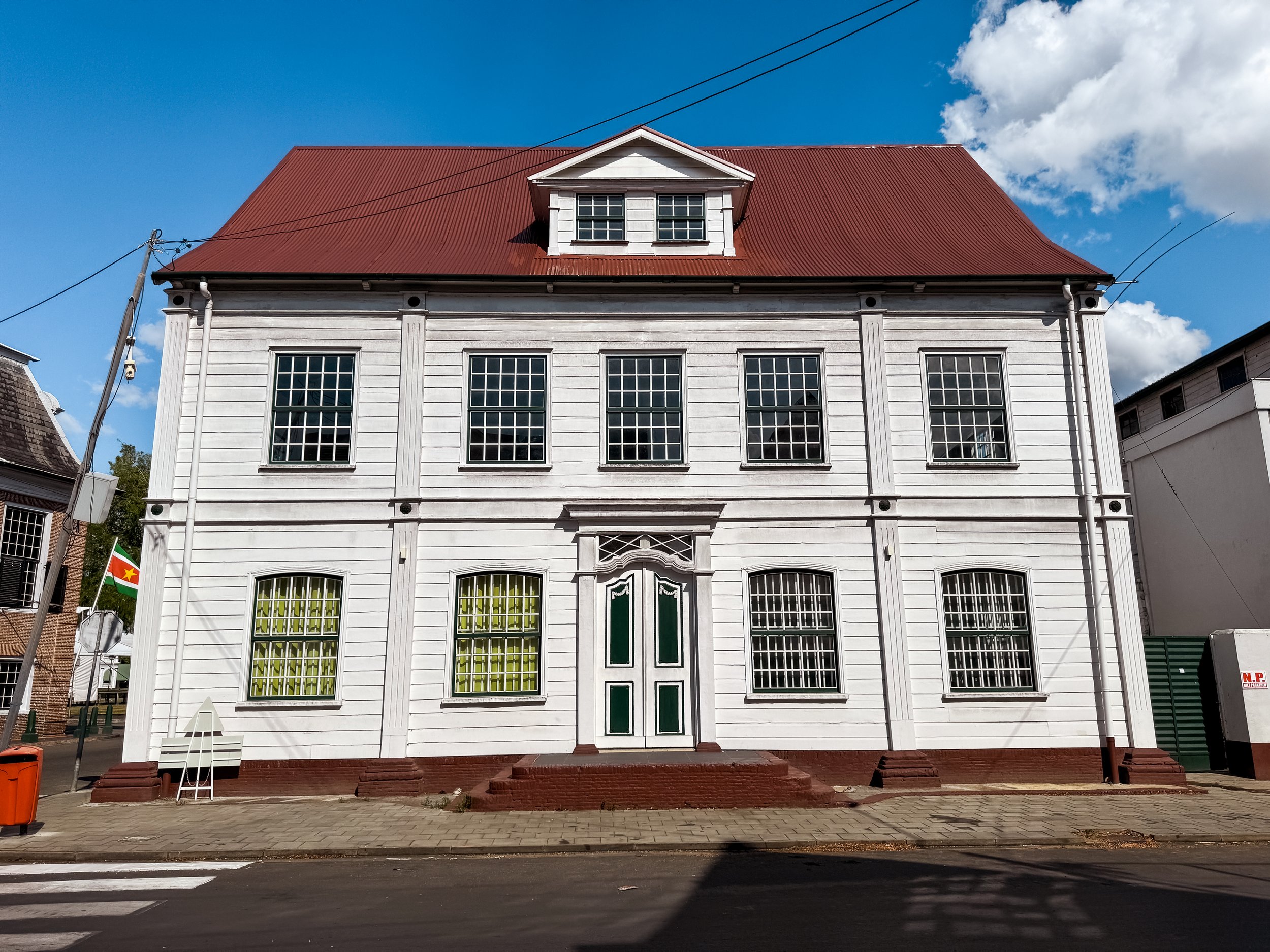
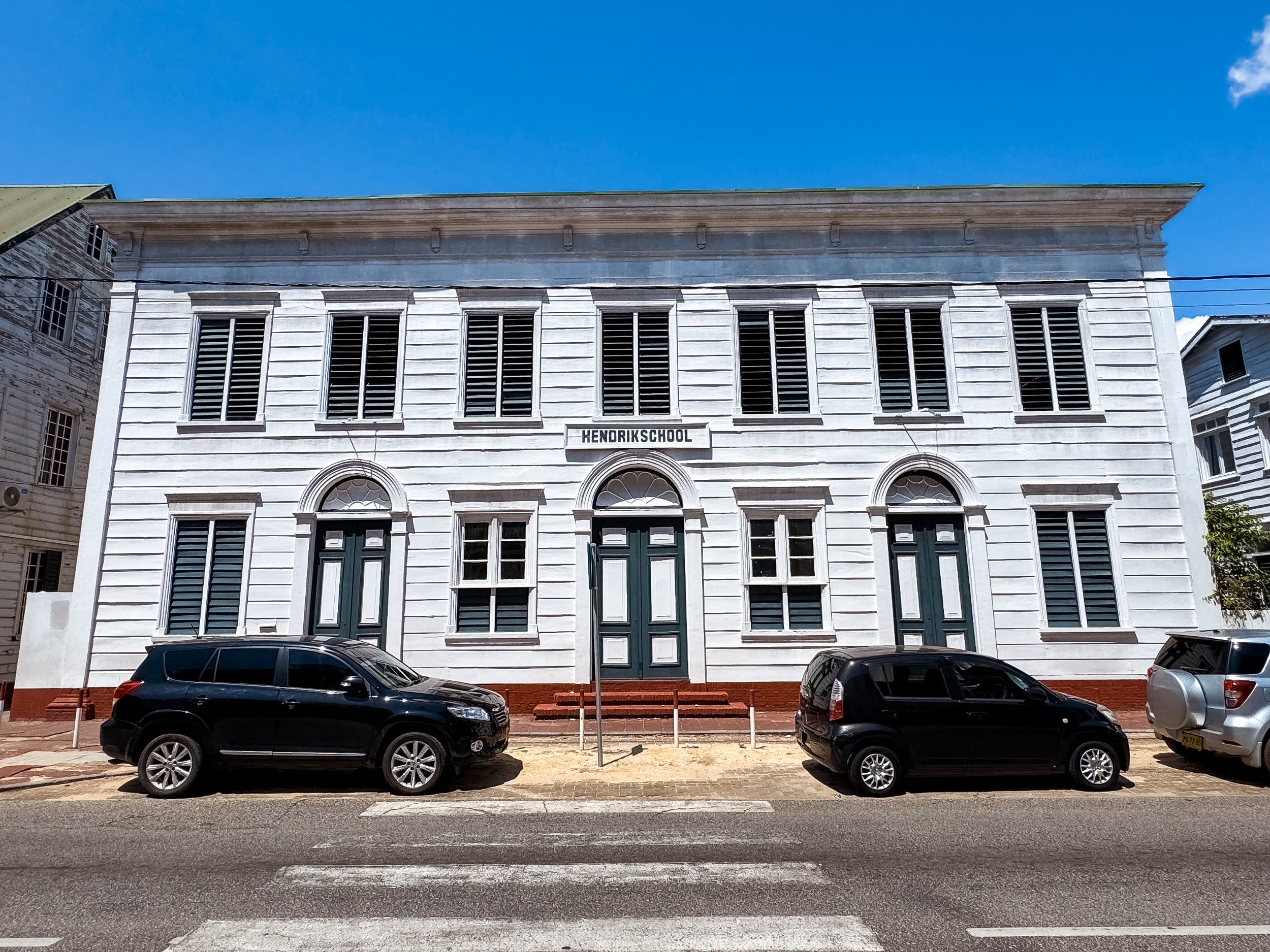
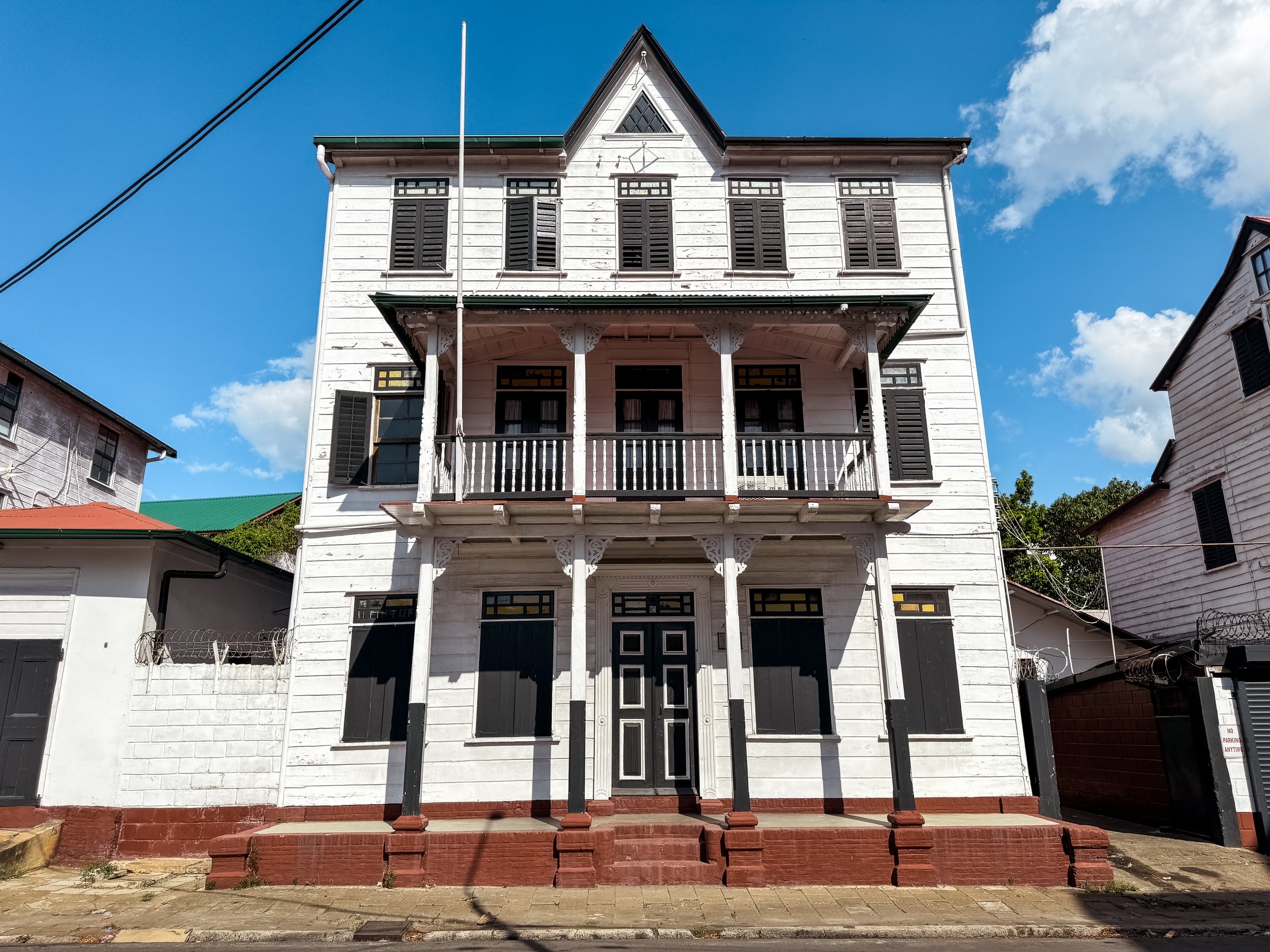
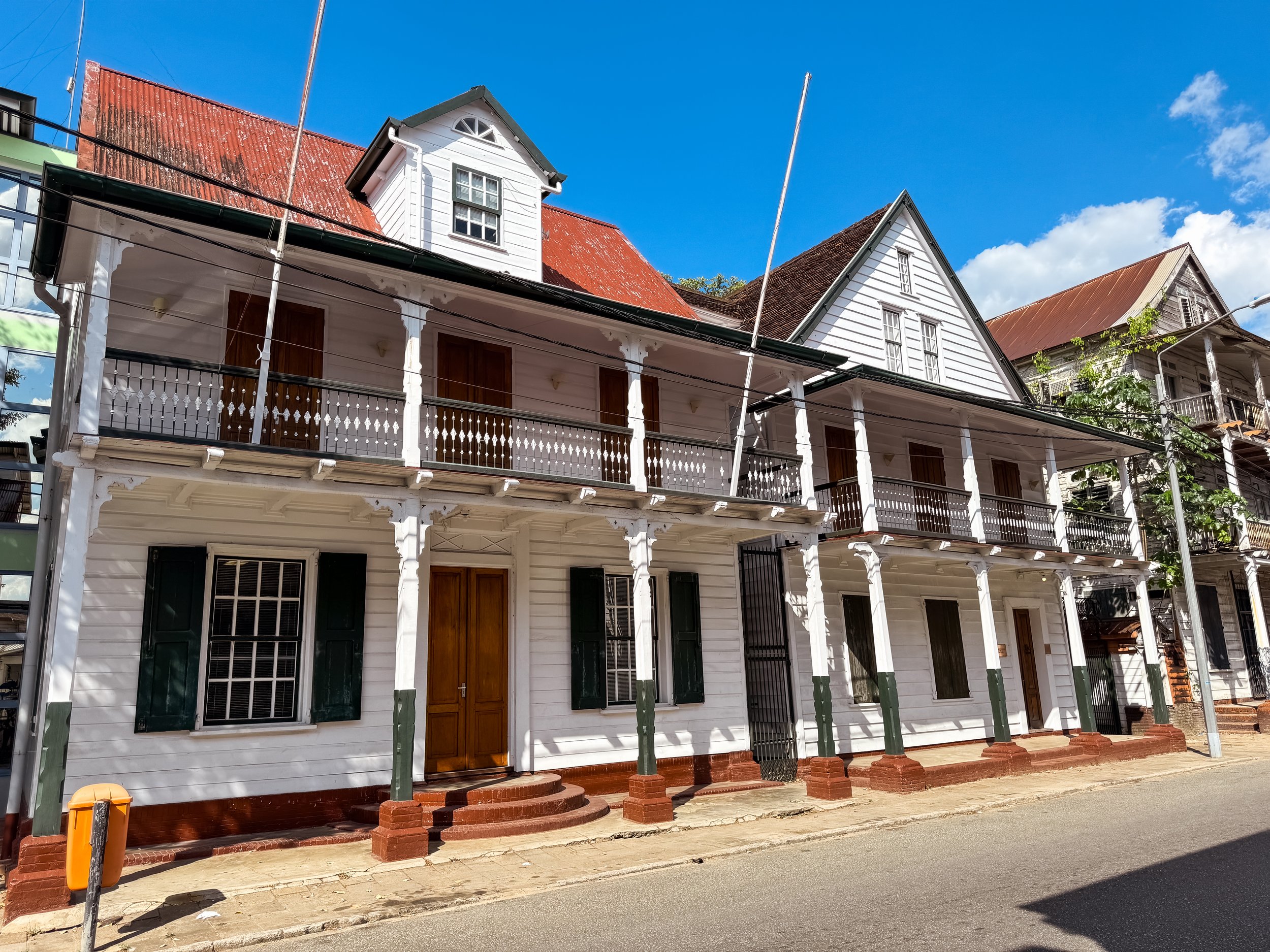
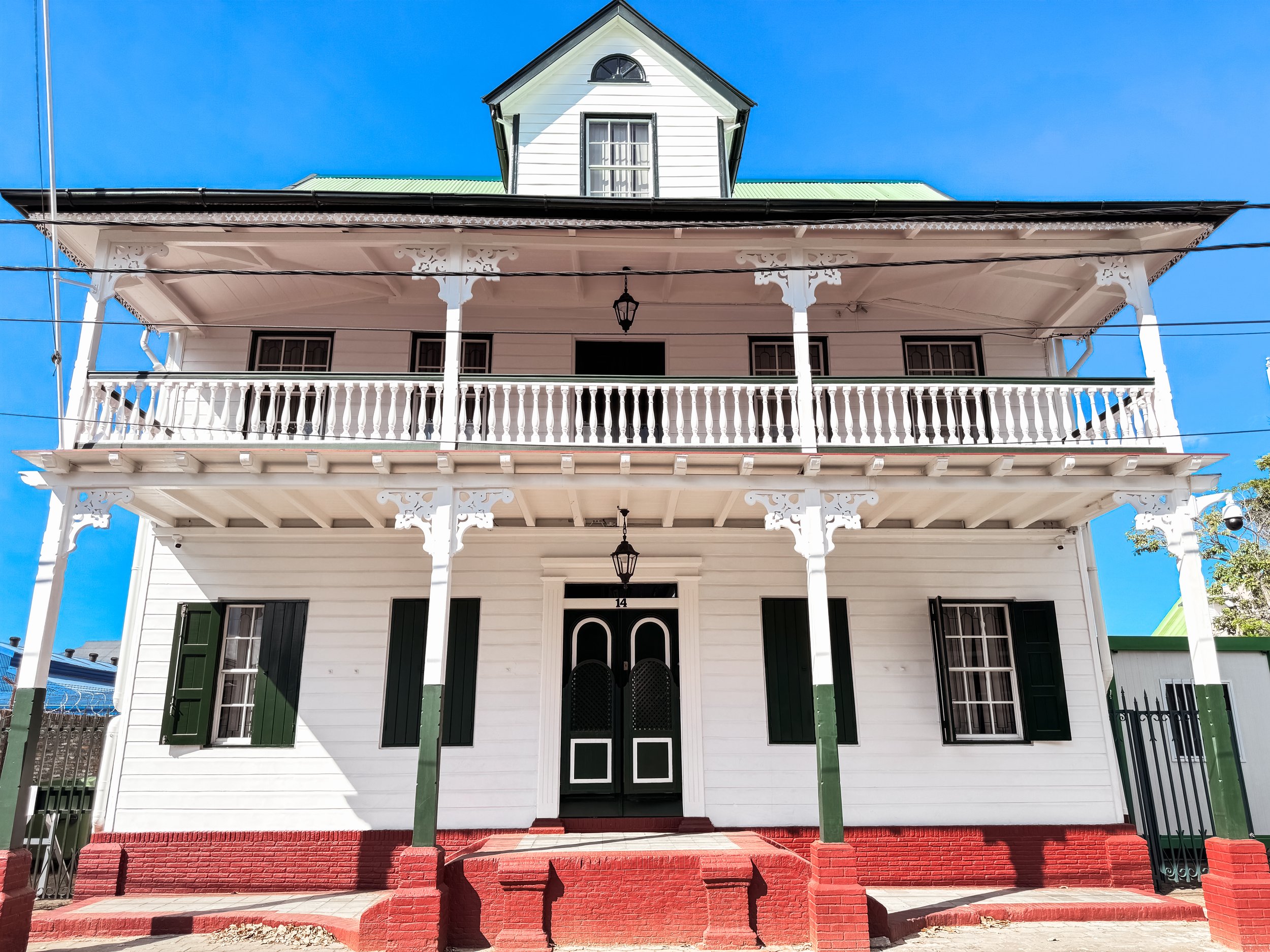
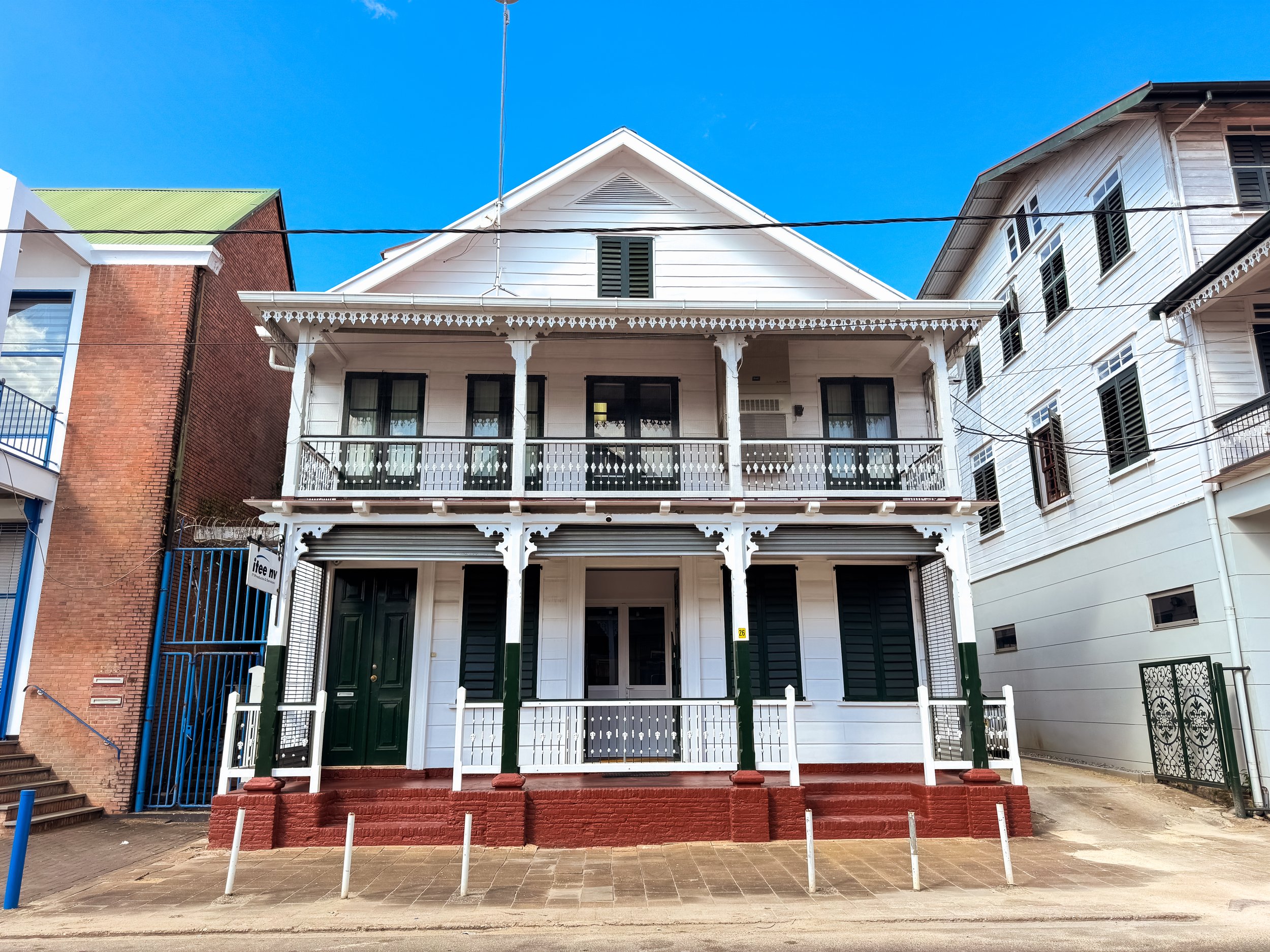
Neighborhoods & Streets
Combe. A neighborhood at the heart of Paramaribo with many historical sights, markets, restaurants & bars, hotels & hostels.
Van Sommelsdijck Street. A street with restaurants and various cuisines including Indian, Italian, Indonesian, Mediterranean and Japanese.
Jessurunstraat. A street with Dutch style houses, cafes, small inns and hostels, including the one we stayed at.
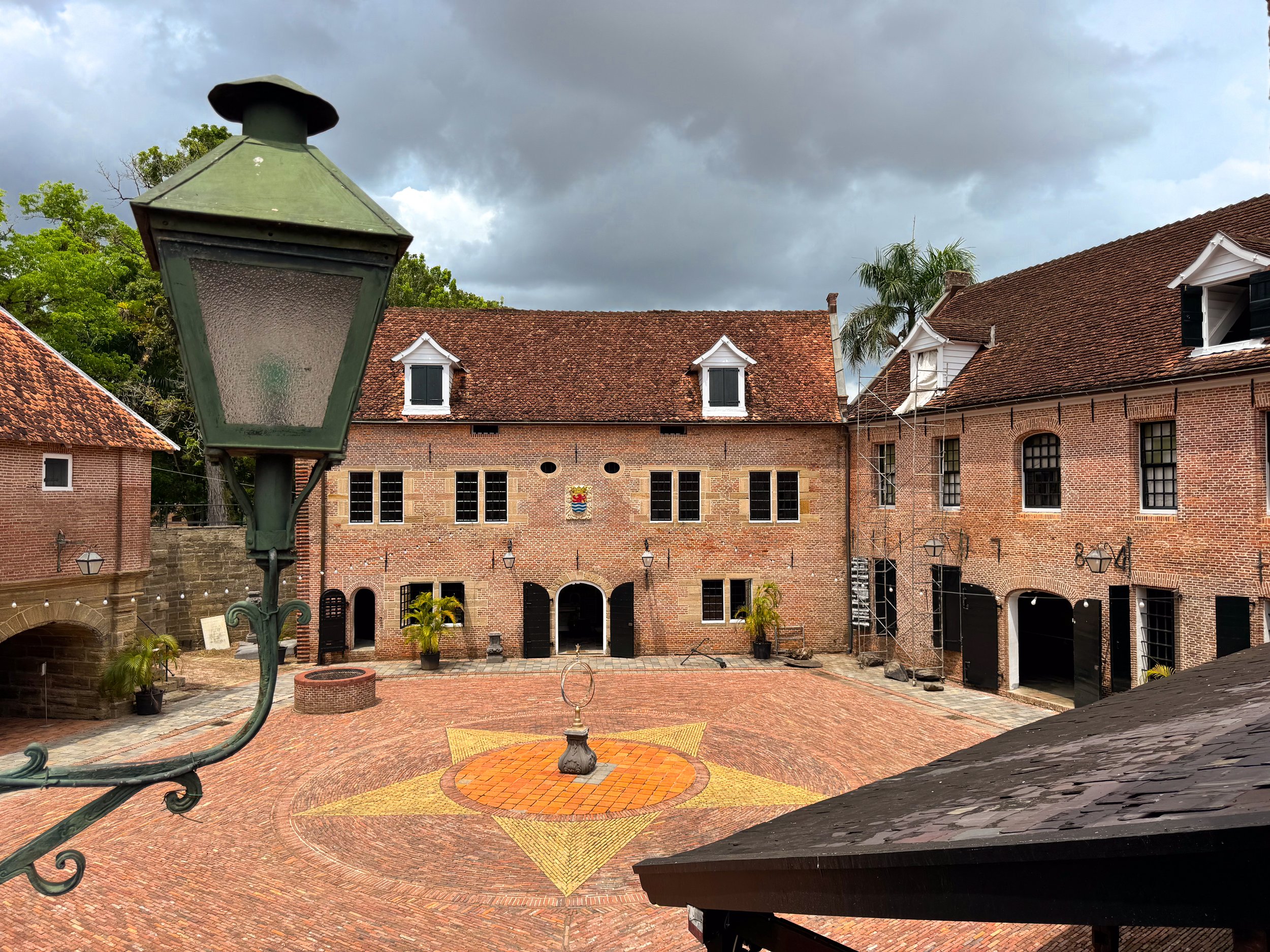
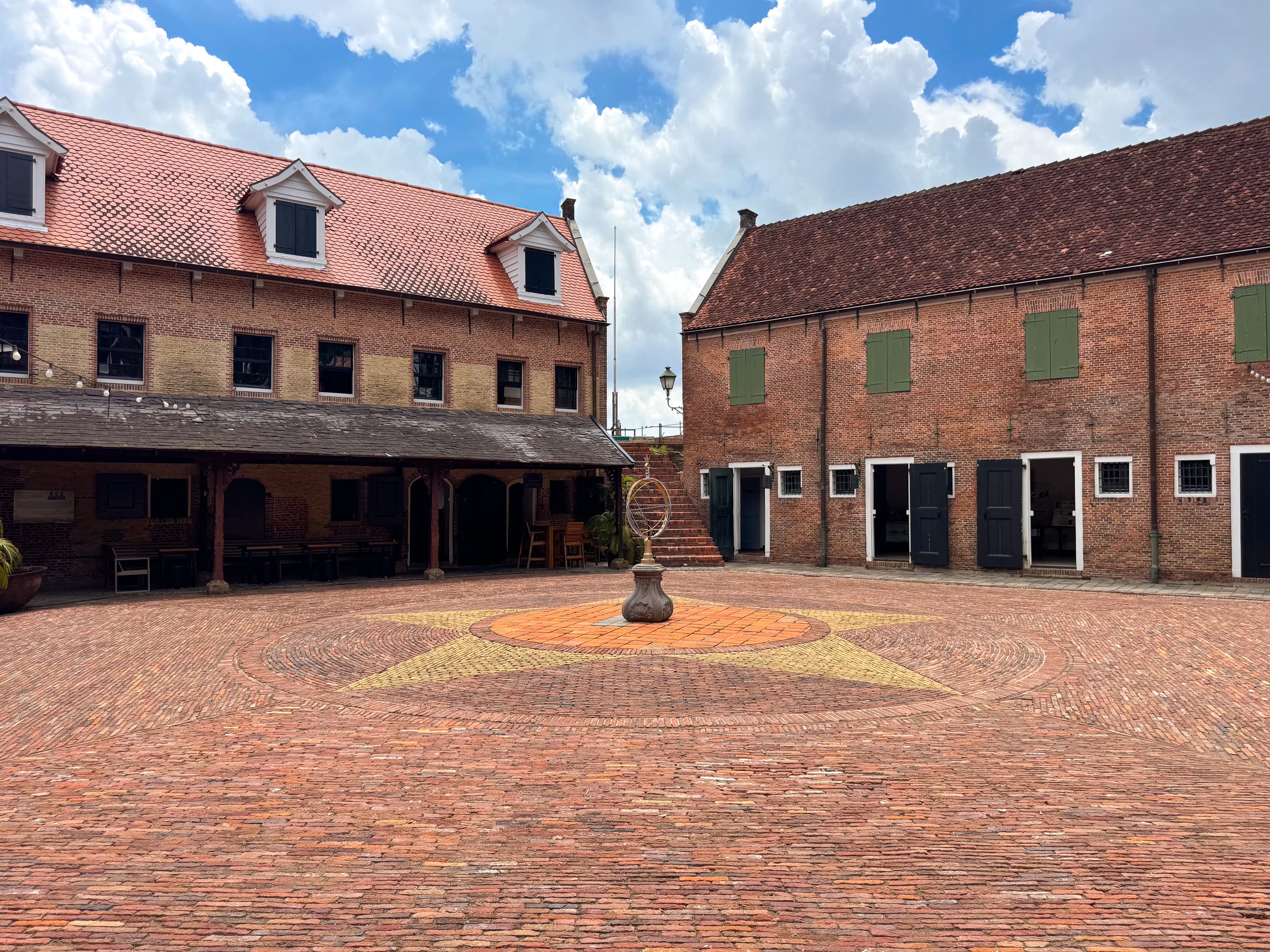
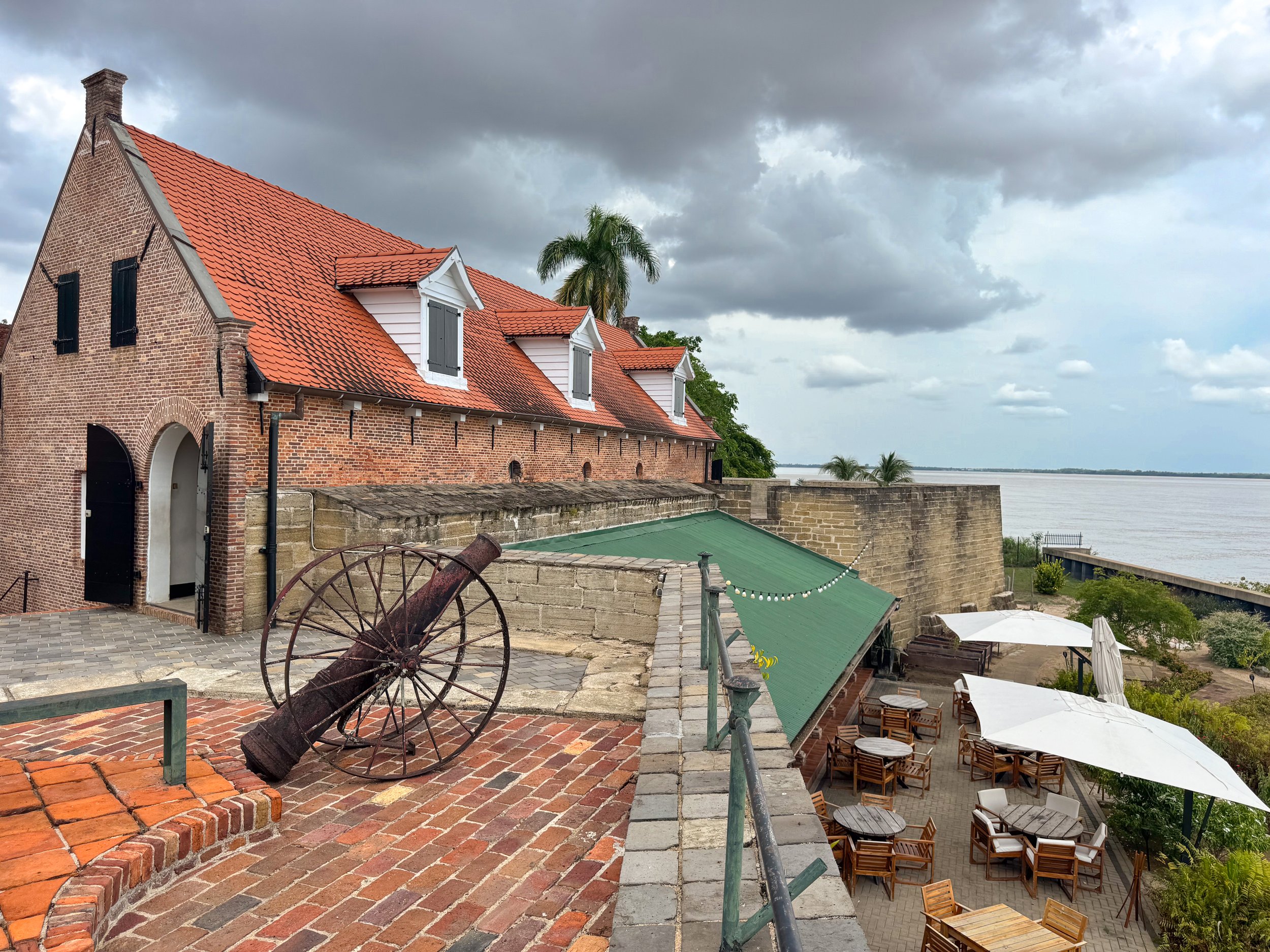

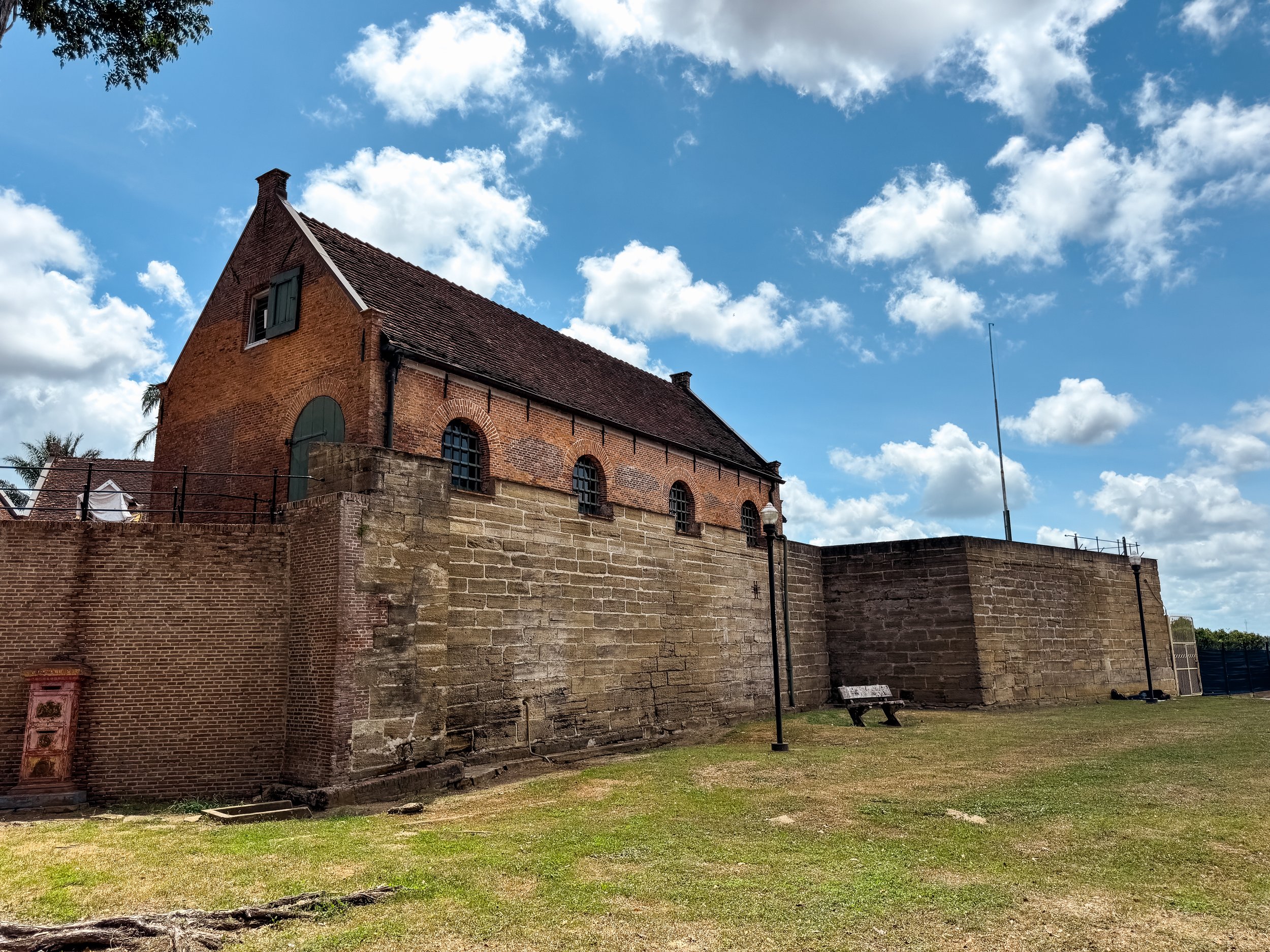
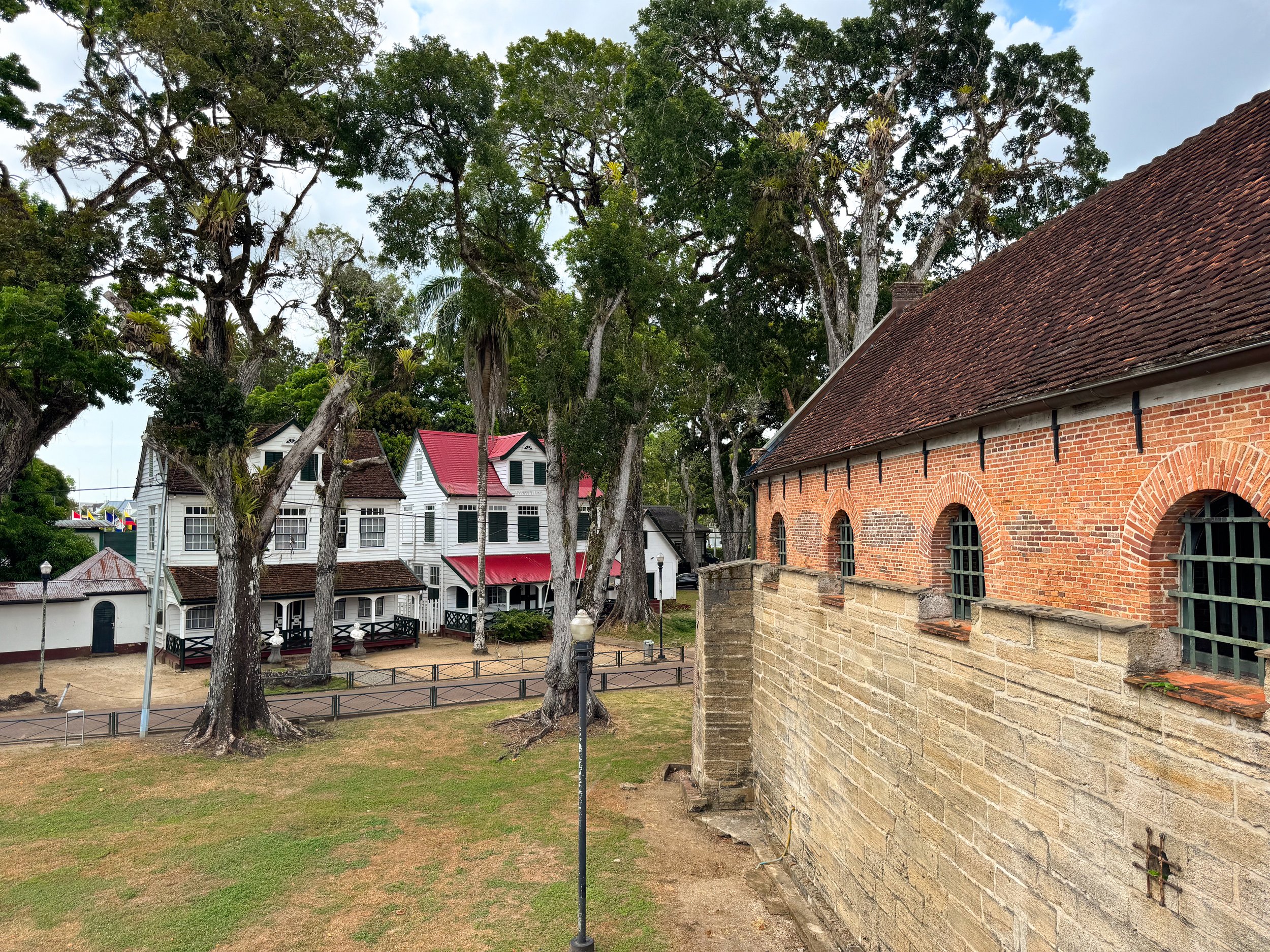
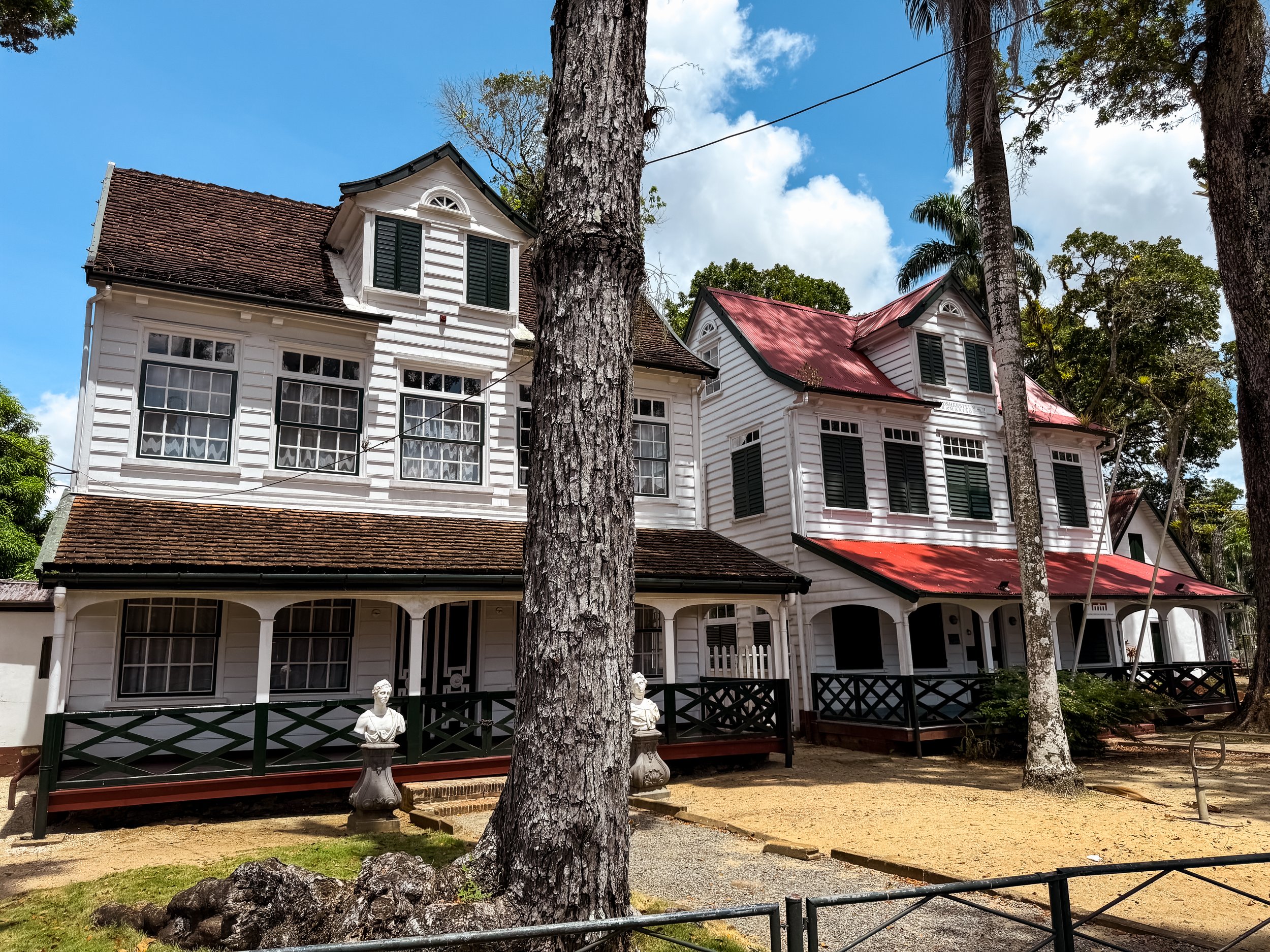
Sights
Fort Zelandia. A historic waterfront fort with a hexagonal stone wall, brick courtyard and buildings within. Outside of its walls is the old town with multiple Dutch colonial wooden houses, cannons, and tall trees.
The fort houses the Suriname Museum, with exhibits telling the history of Suriname from its colonial past to independence with artifacts from enslaved Africans, the Maroon people and Pre-Colombia cultures.
On the ground floor of the fort is, Baka Foto, a refined feeling restaurant and bar with a garden overlooking river. After touring the fort, we stopped in to sip on Borgoe, a Surinamese rum. It had the sweet spiciness of a rum and flavor of a cognac.
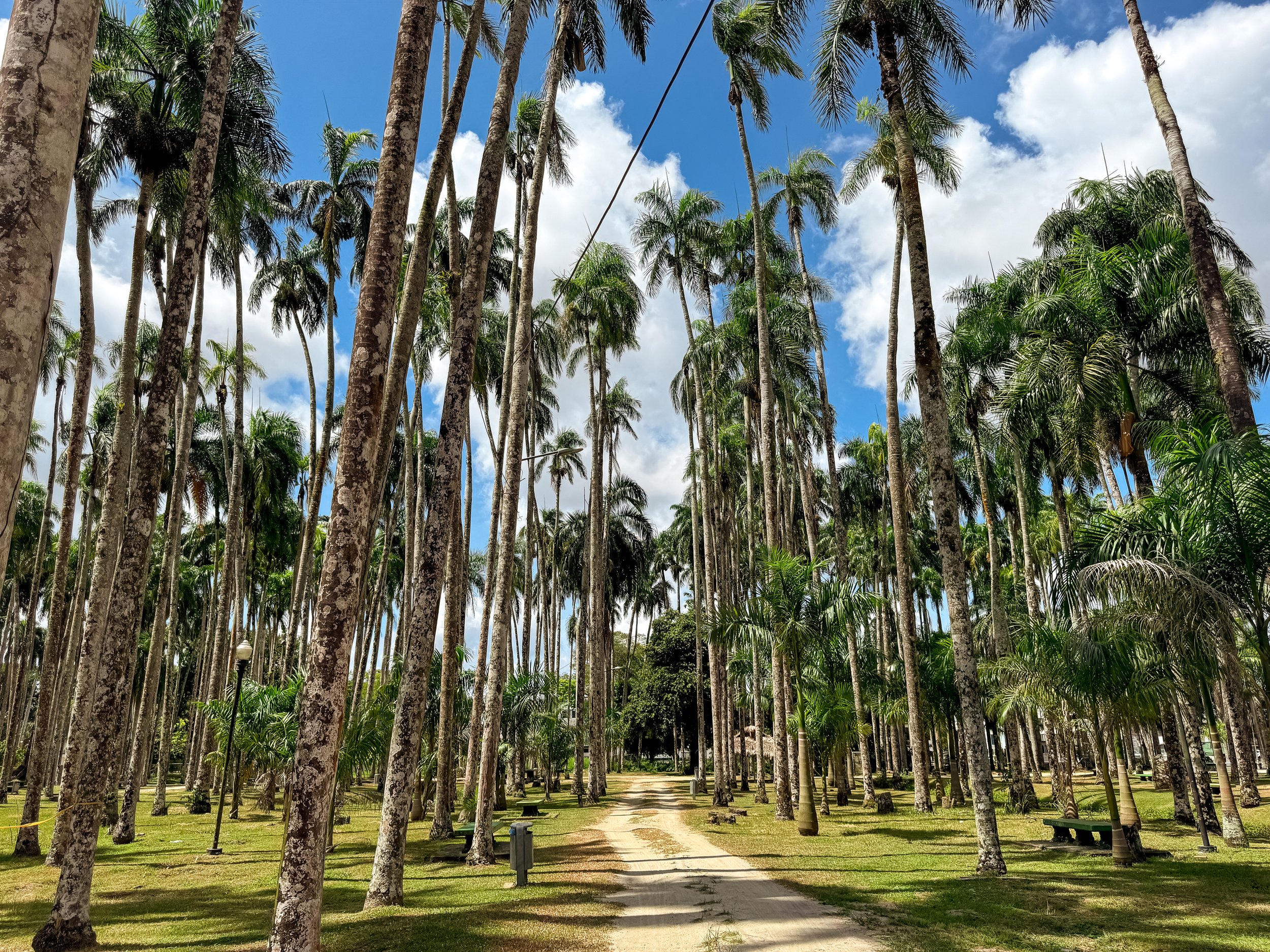
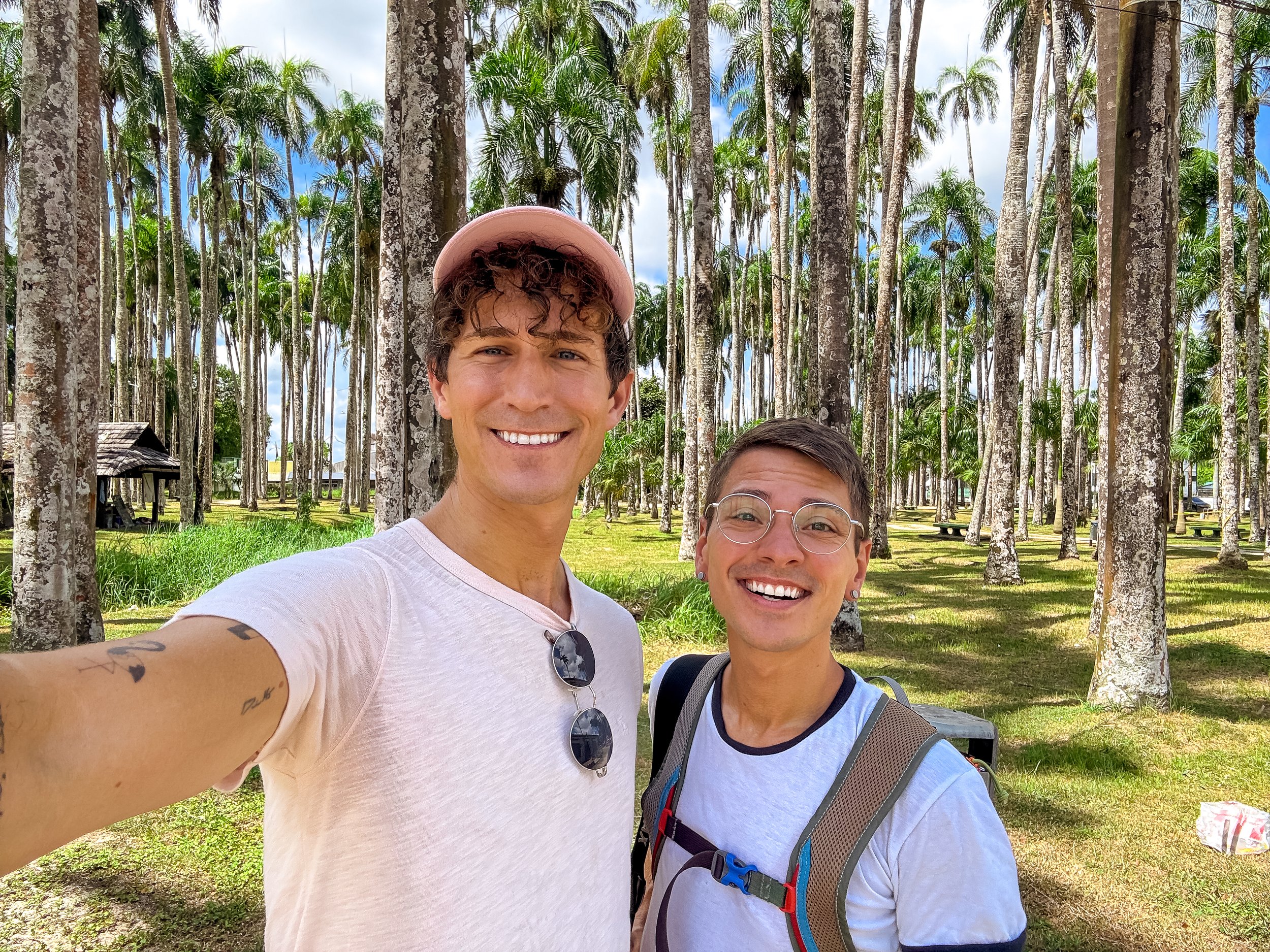
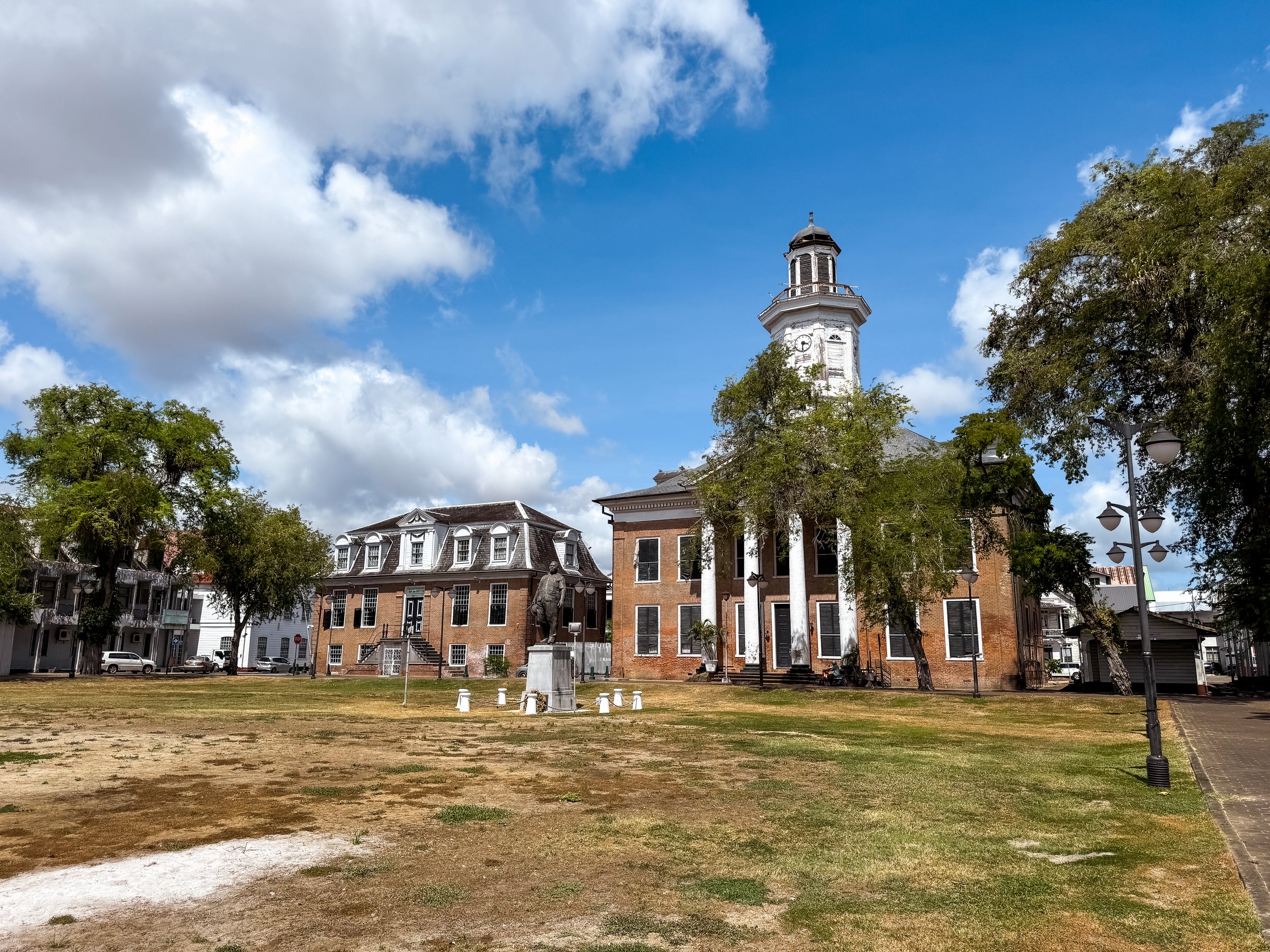
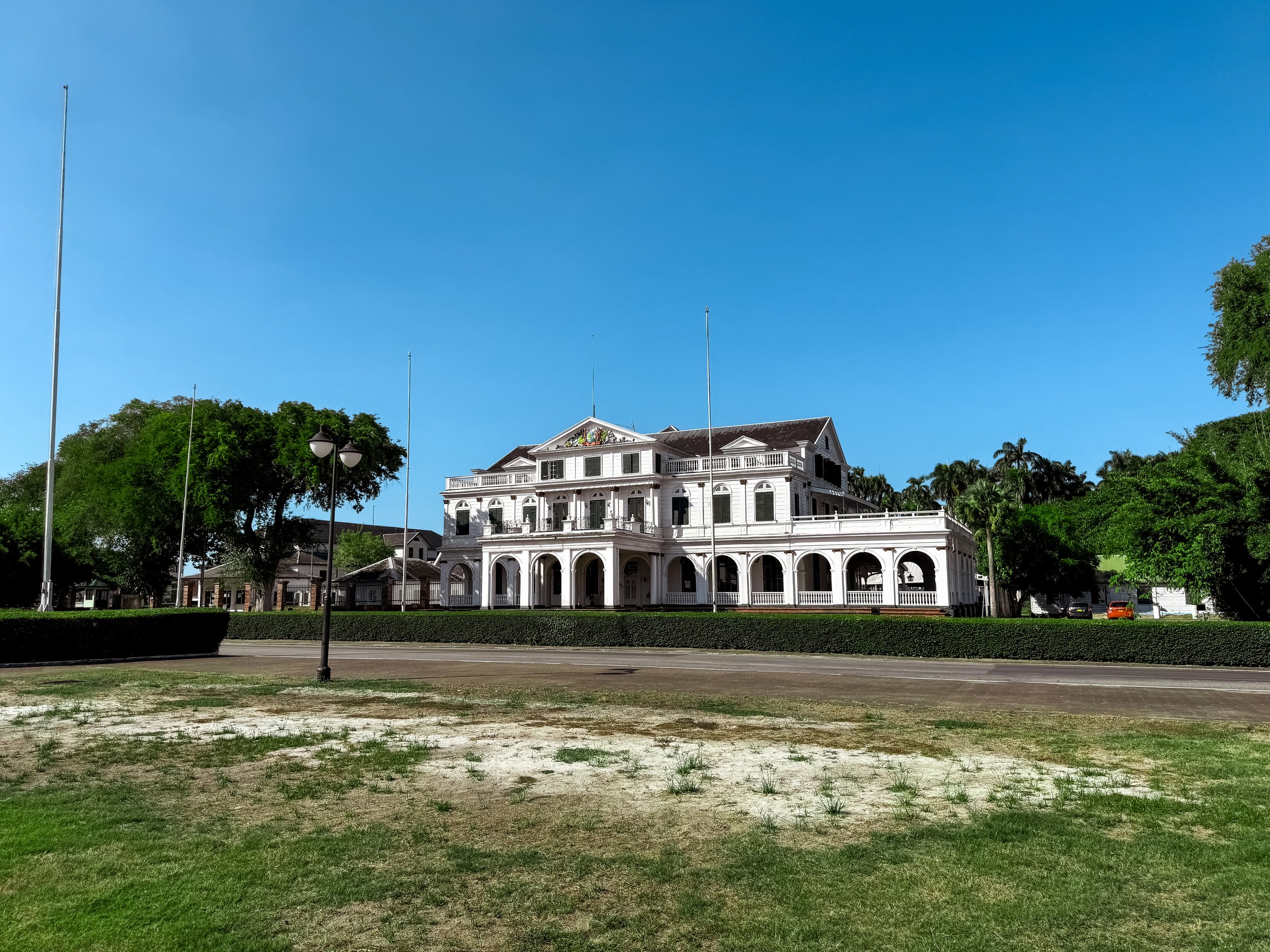
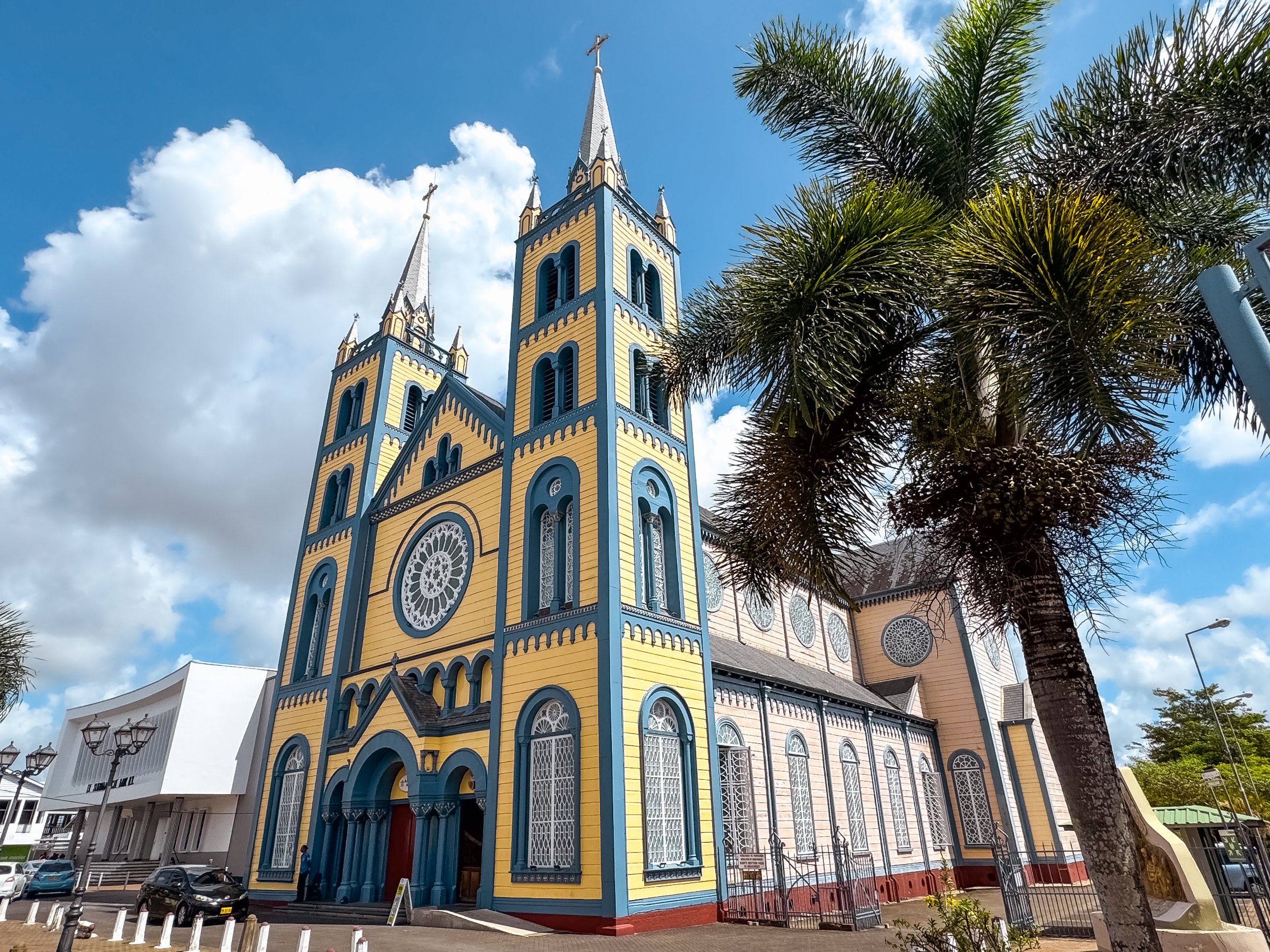
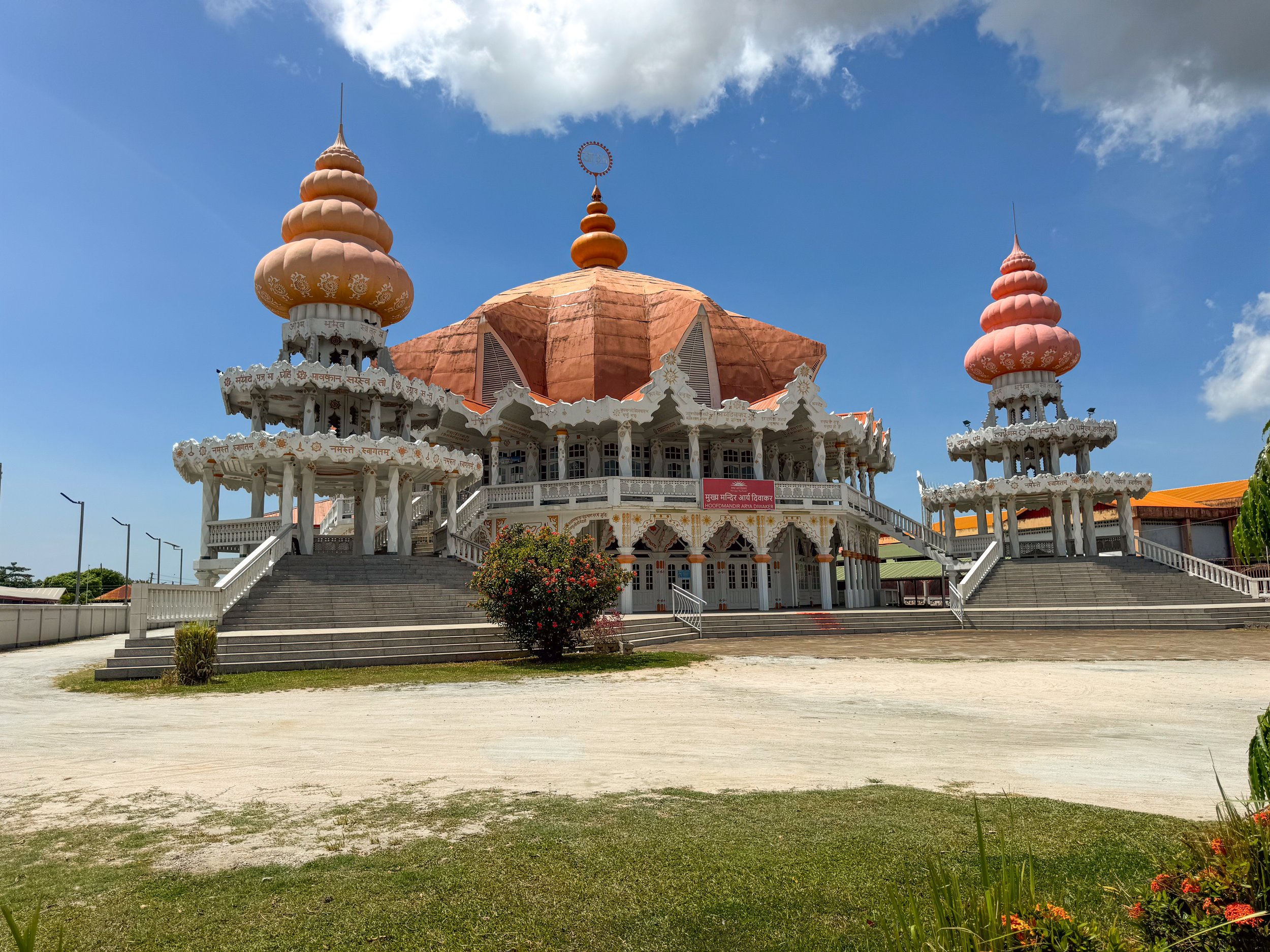



Waterkant Boulevard. A waterfront park on the Suriname River with historic Dutch colonial buildings. When we visited, the park was closed for a lengthy renovation. Even so, we got to admire the architecture characterized by its white painted wooden facades, tiled roofs, green window and door moldings and red brick foundation.
Independence Square. A gravel plaza surrounded by Suriname’s government buildings including the Presidential Palace, House of Justice, National Assembly and Ministry of Finance.
Presidential Palace. A large wooden Dutch style mansion home to Suriname’s presidency.
Palmentuin. The presidential palm garden with hundreds of towering palm trees, walkways and monuments. Come here to listen to the birds chirping and singing.
Religious Sights. Suriname is proud of its cultural diversity, a fact that is evident by their various sights of worship including churches, mosques and Hindu temples across the city.
St Peter & Paul Cathedral. A large wooden basilica with a painted blue, yellow and peach colored facade decorated in Dutch style moldings.
Arya Dewaker. A large Hindu temple with a domed temple hall and Dutch style influences like its symmetrical design and paned windows.
Mosque Keizerstraat. A large beautifully designed mosque with four minarets and a central domed hall.
Nevah Shalom Synagogue. A Dutch style wooden temple with a symmetrical design, white facade, paned windows and tall columns.
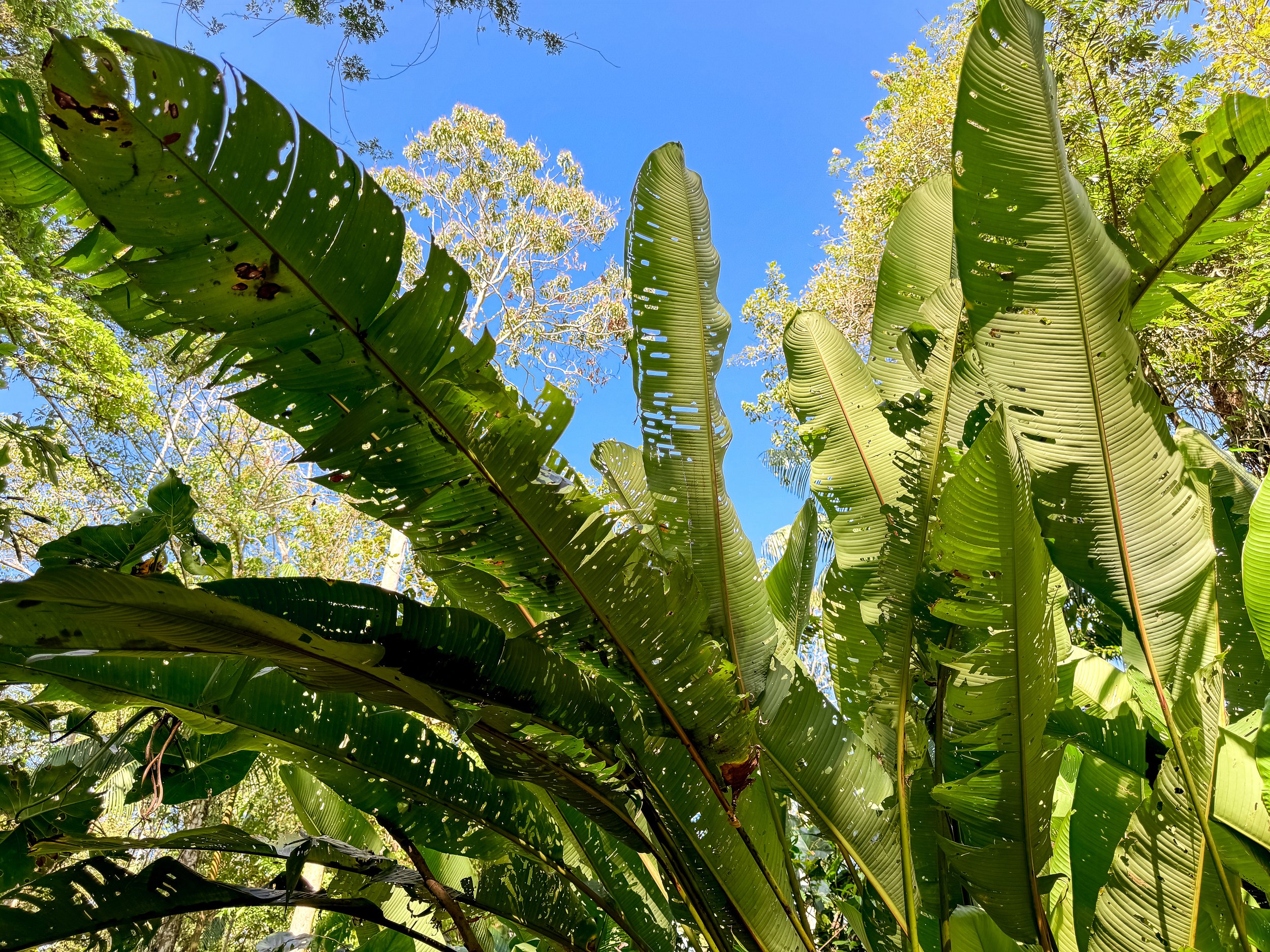
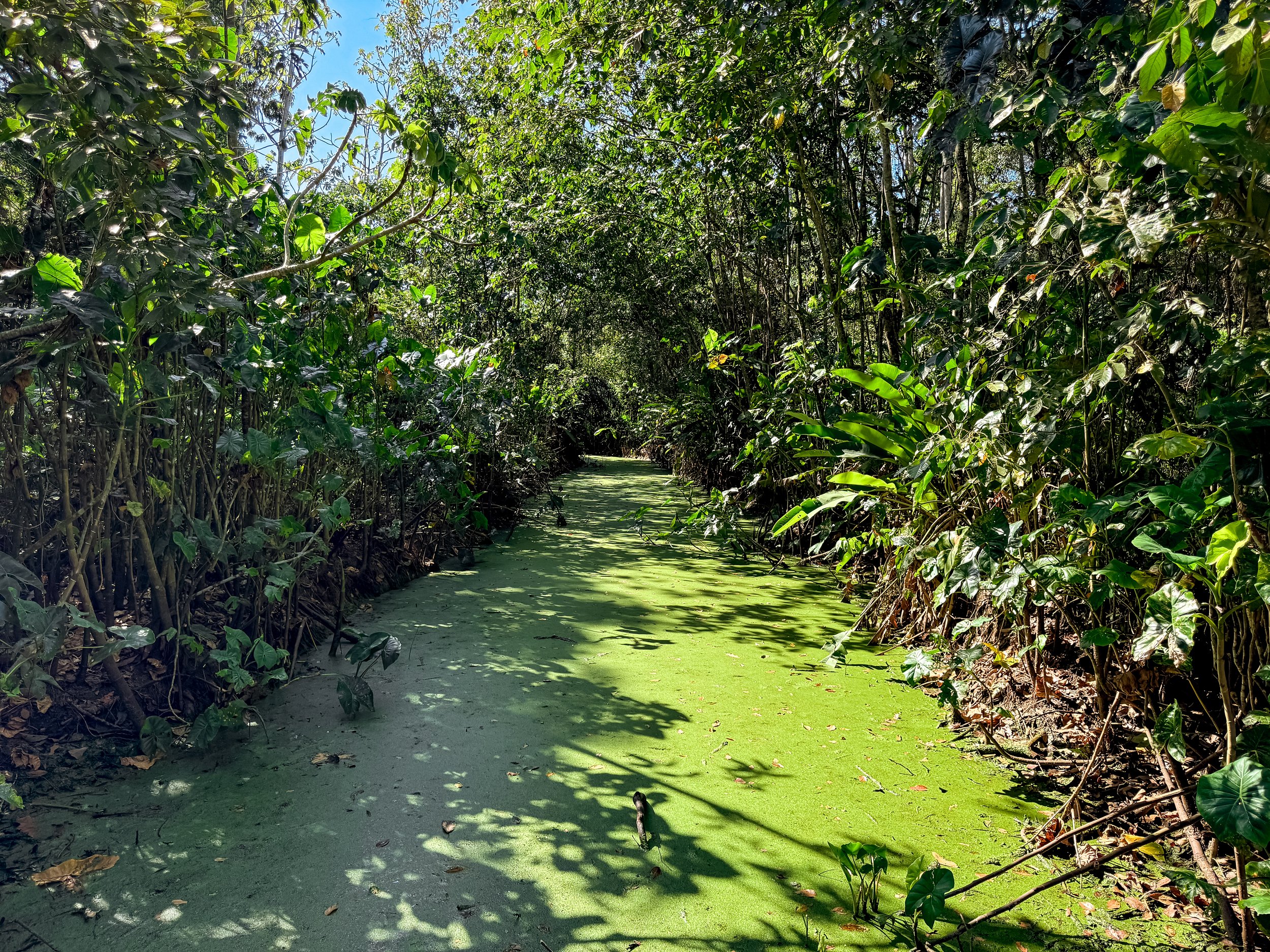
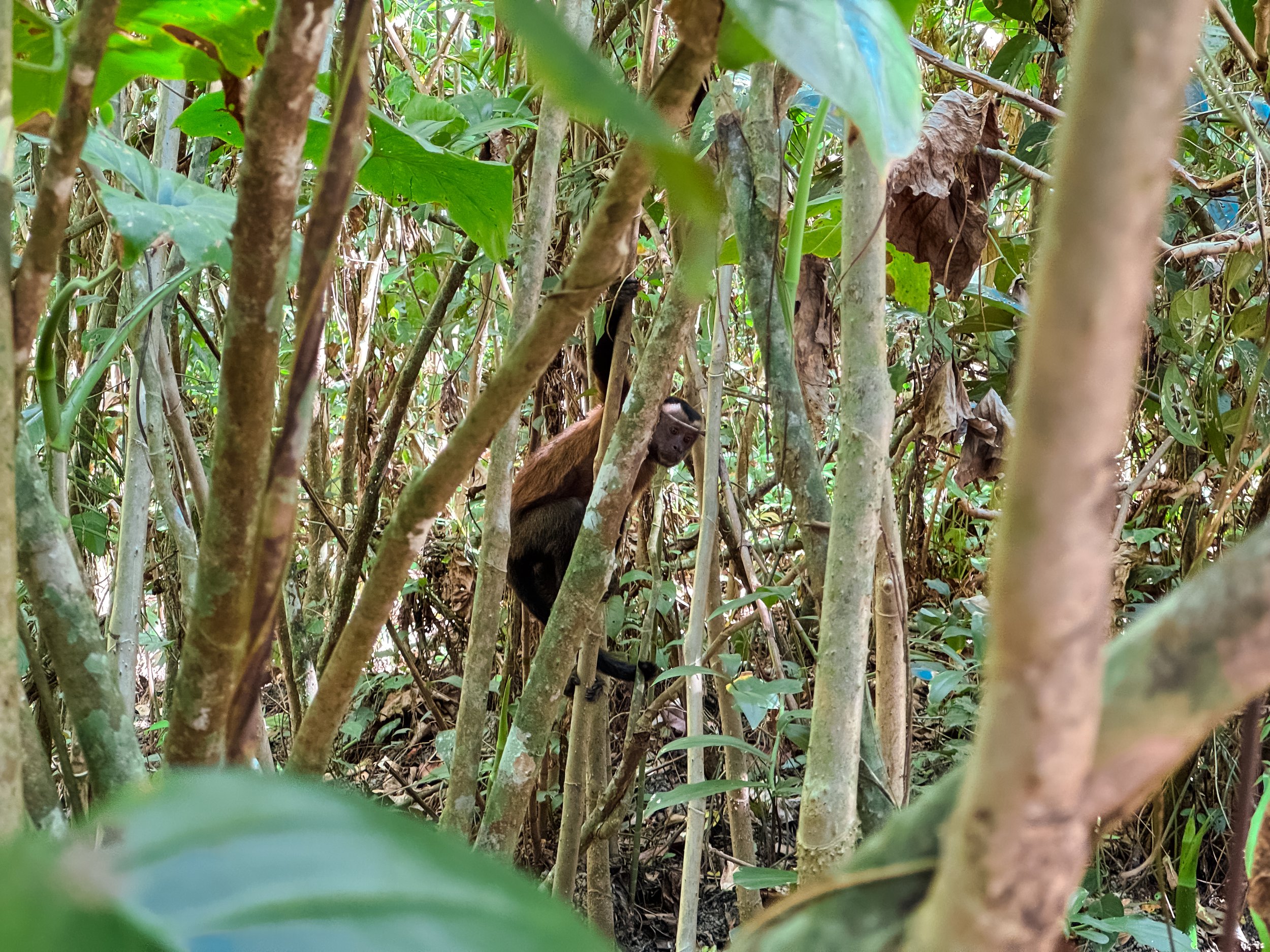
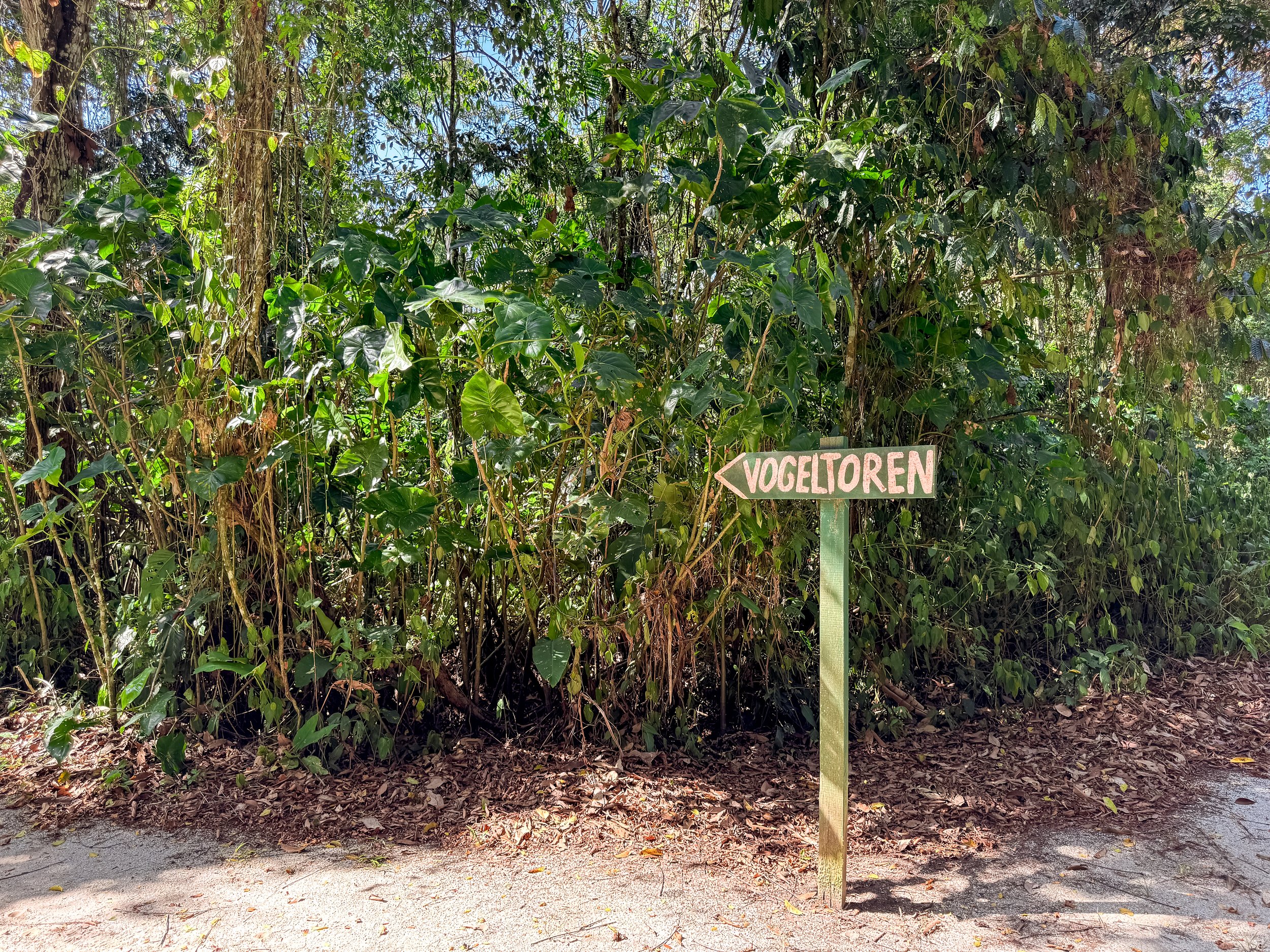
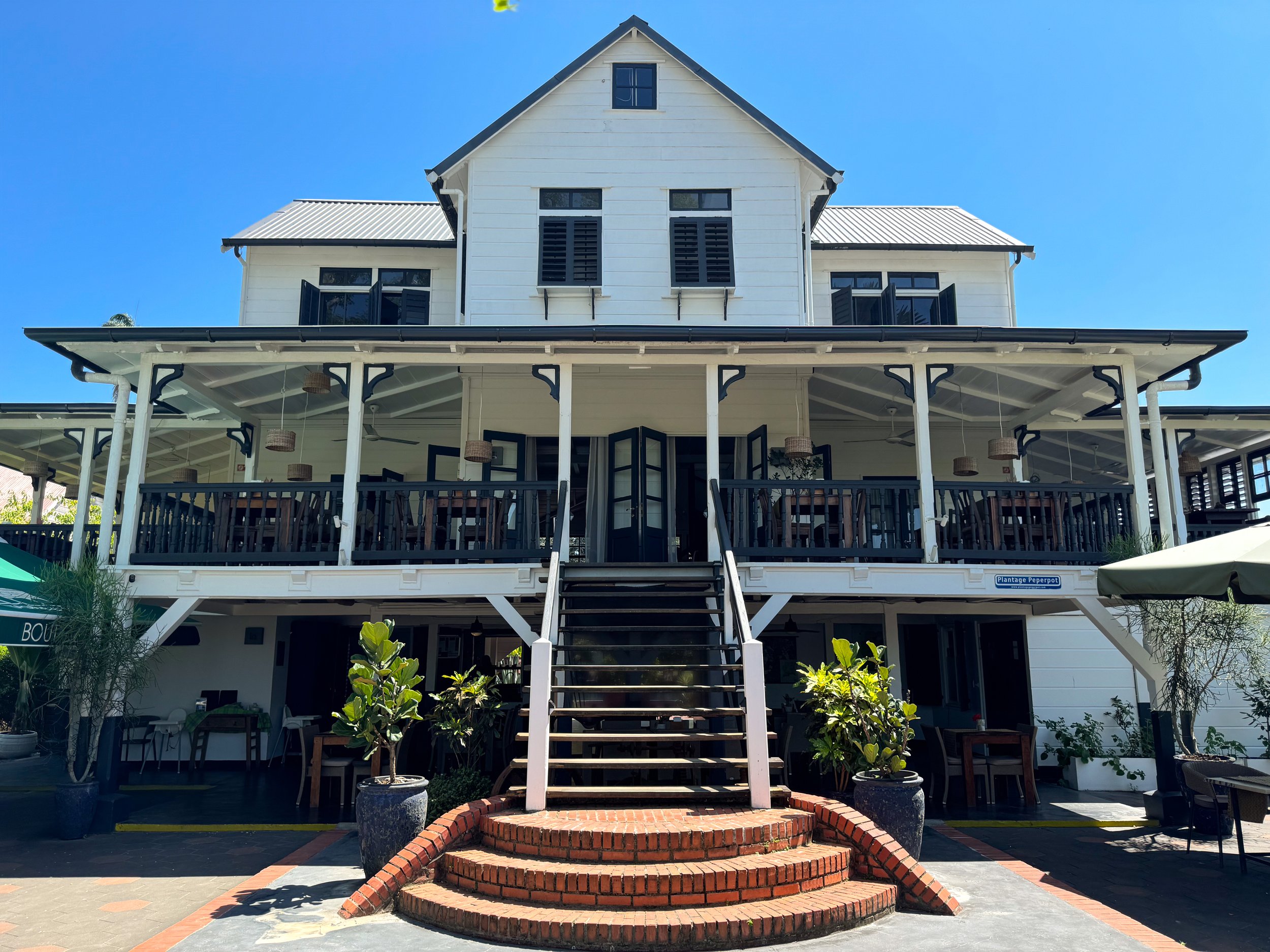
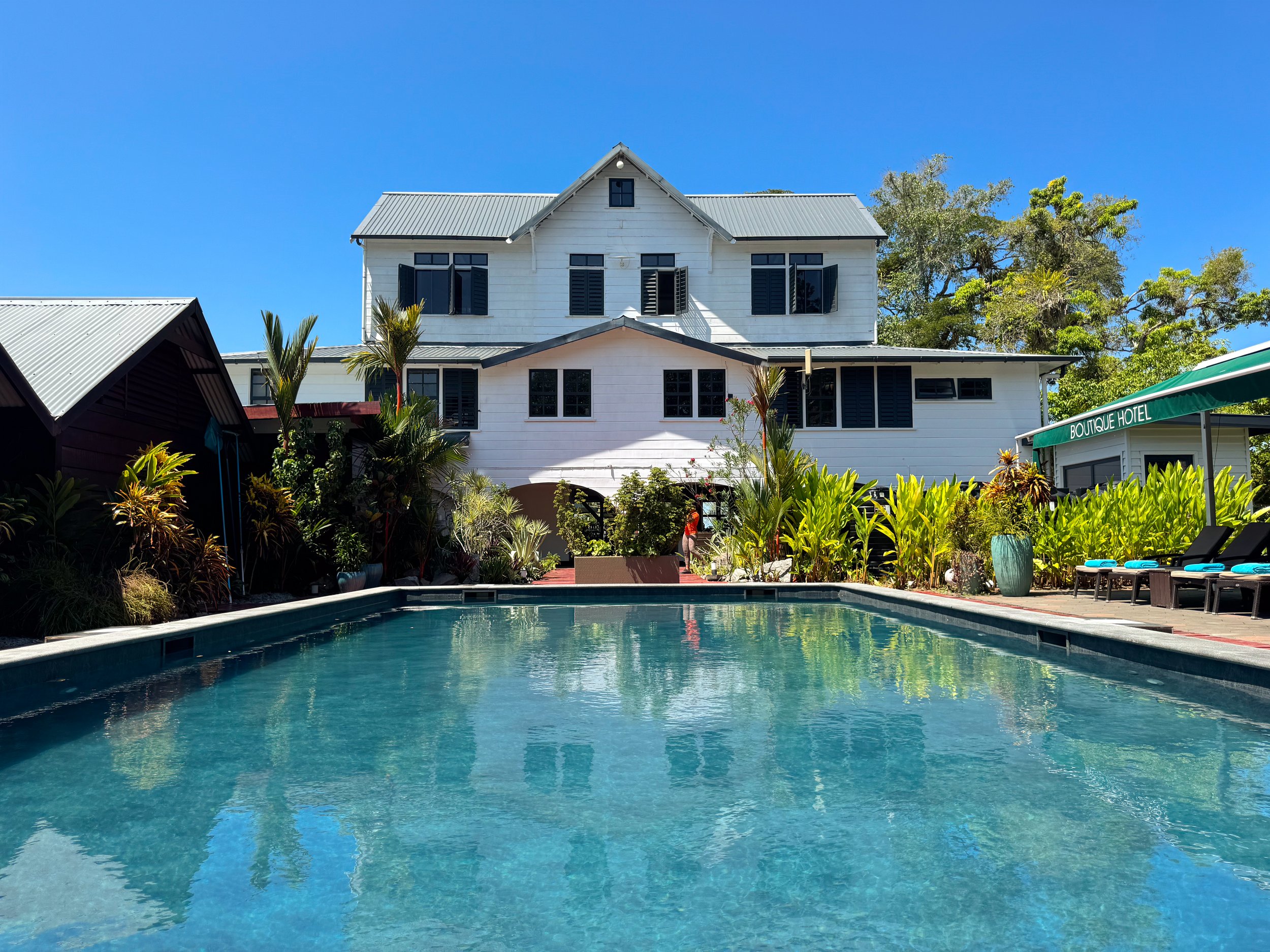
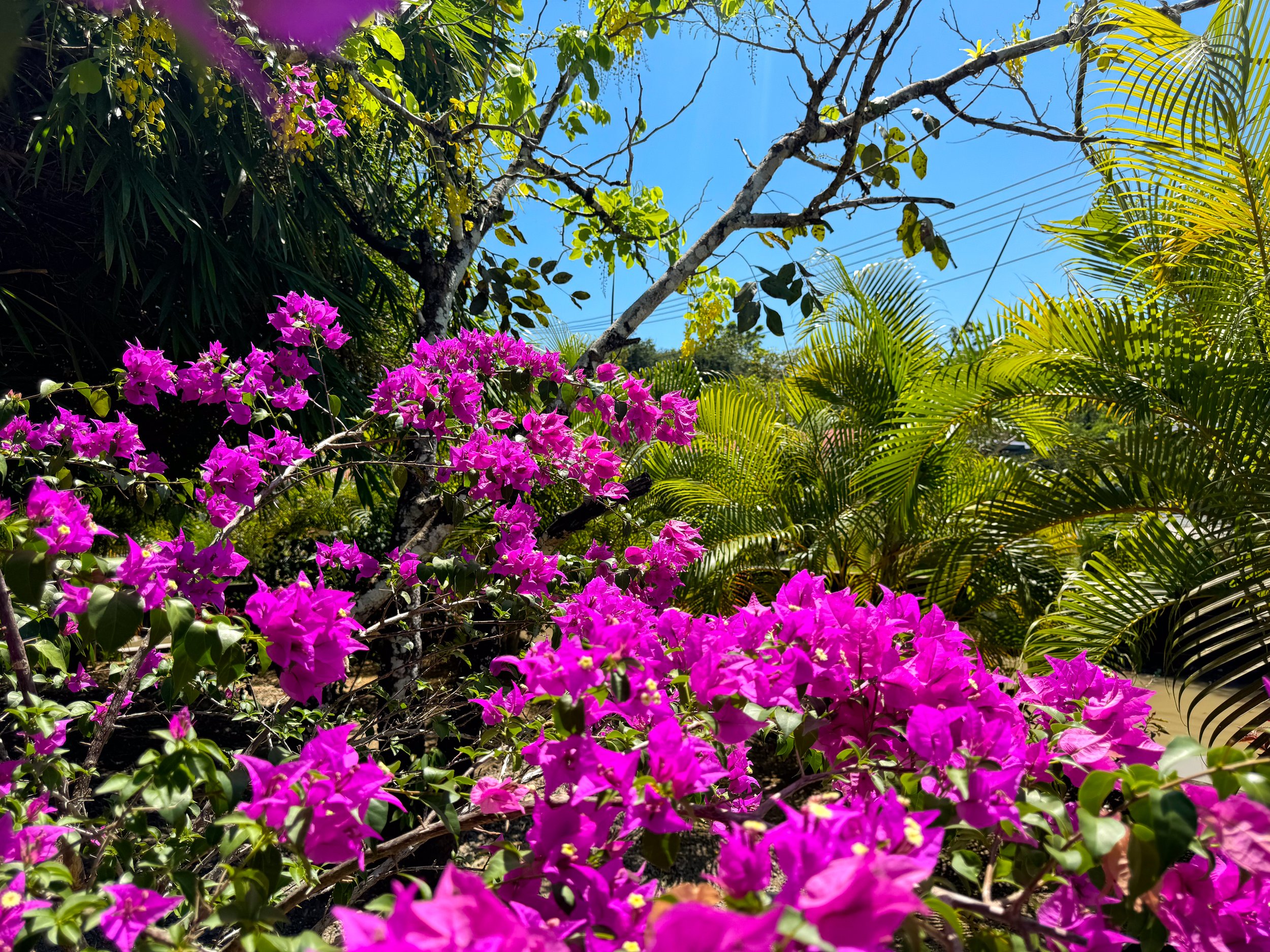
Peper Pot Nature Park. Across from Paramaribo on the other side of the Suriname River are many former sugar cane and coffee plantations, since converted into farmland, nature reserves and residential neighborhoods.
We visited Peper Pot, a nature park with lush trails and dirt roadways for walking and biking. Along the trails, we spotted families of squirrel and capuchin monkeys, rainbow lizards, yellow breasted corn birds and scarlet peacock butterflies. Pepper Pot continued to produce coffee through the mid 1990s. Since then the former Dutch colonial plantation buildings have been converted into a boutique hotel with a restaurant and pool.
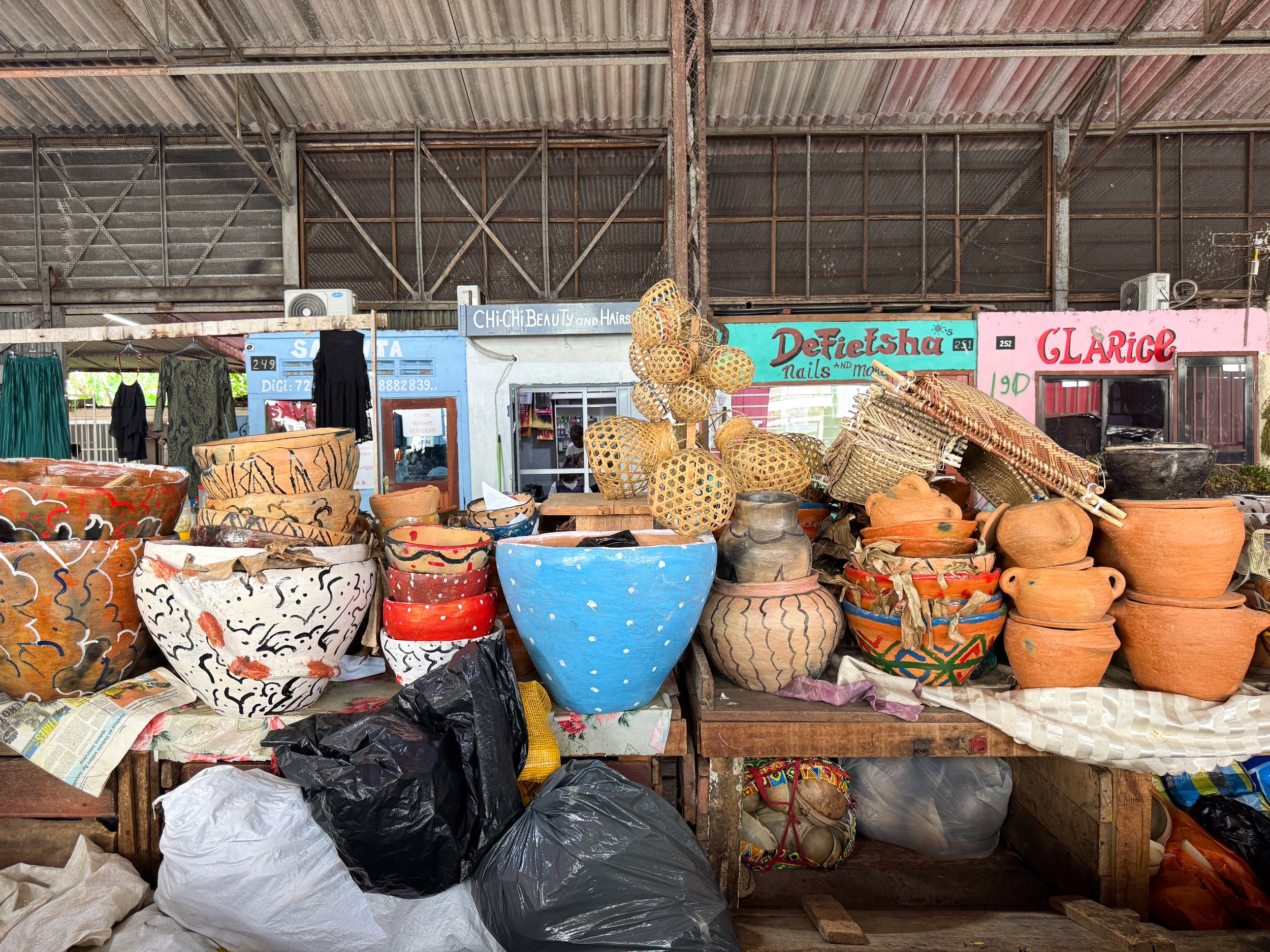
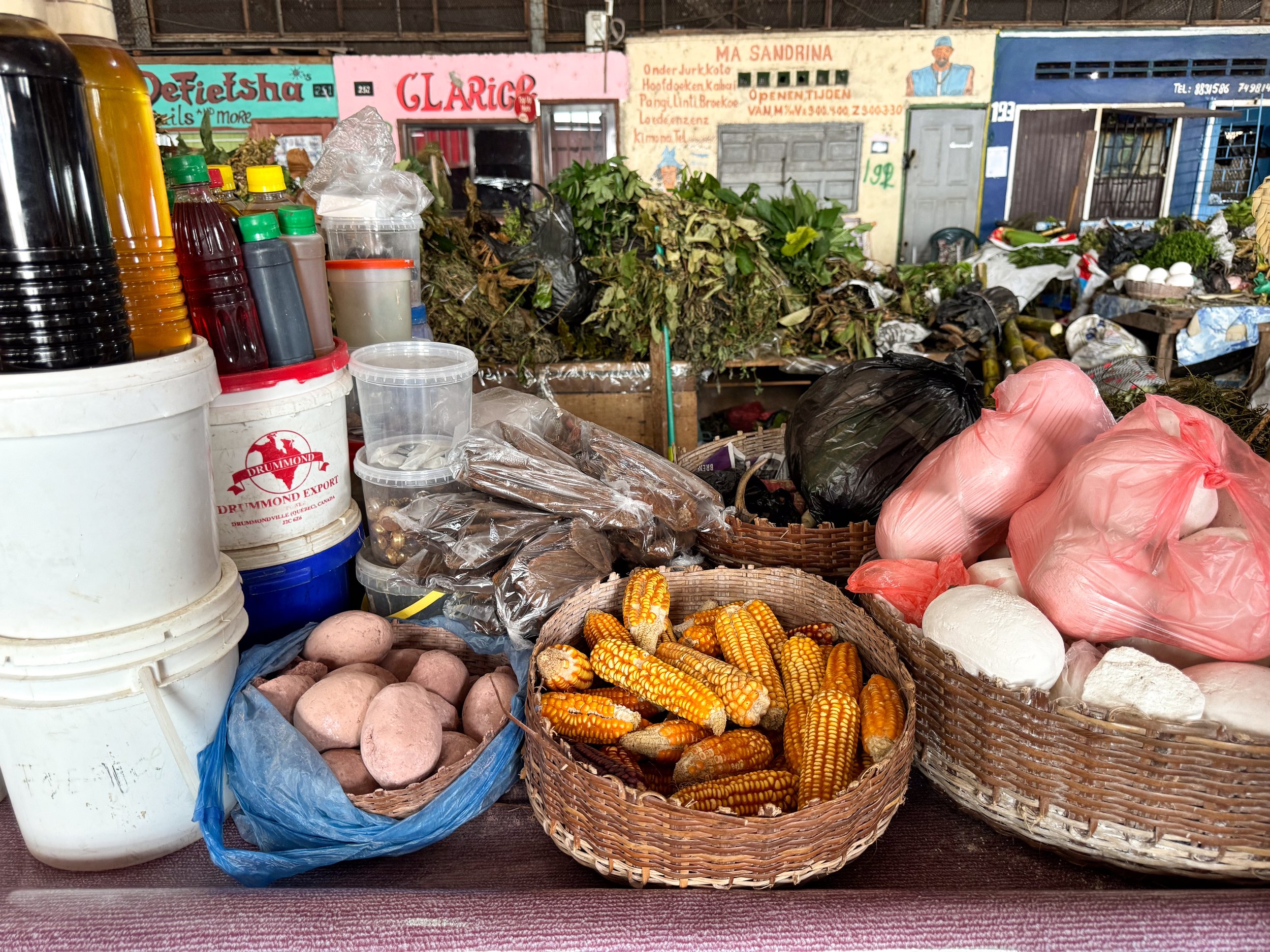
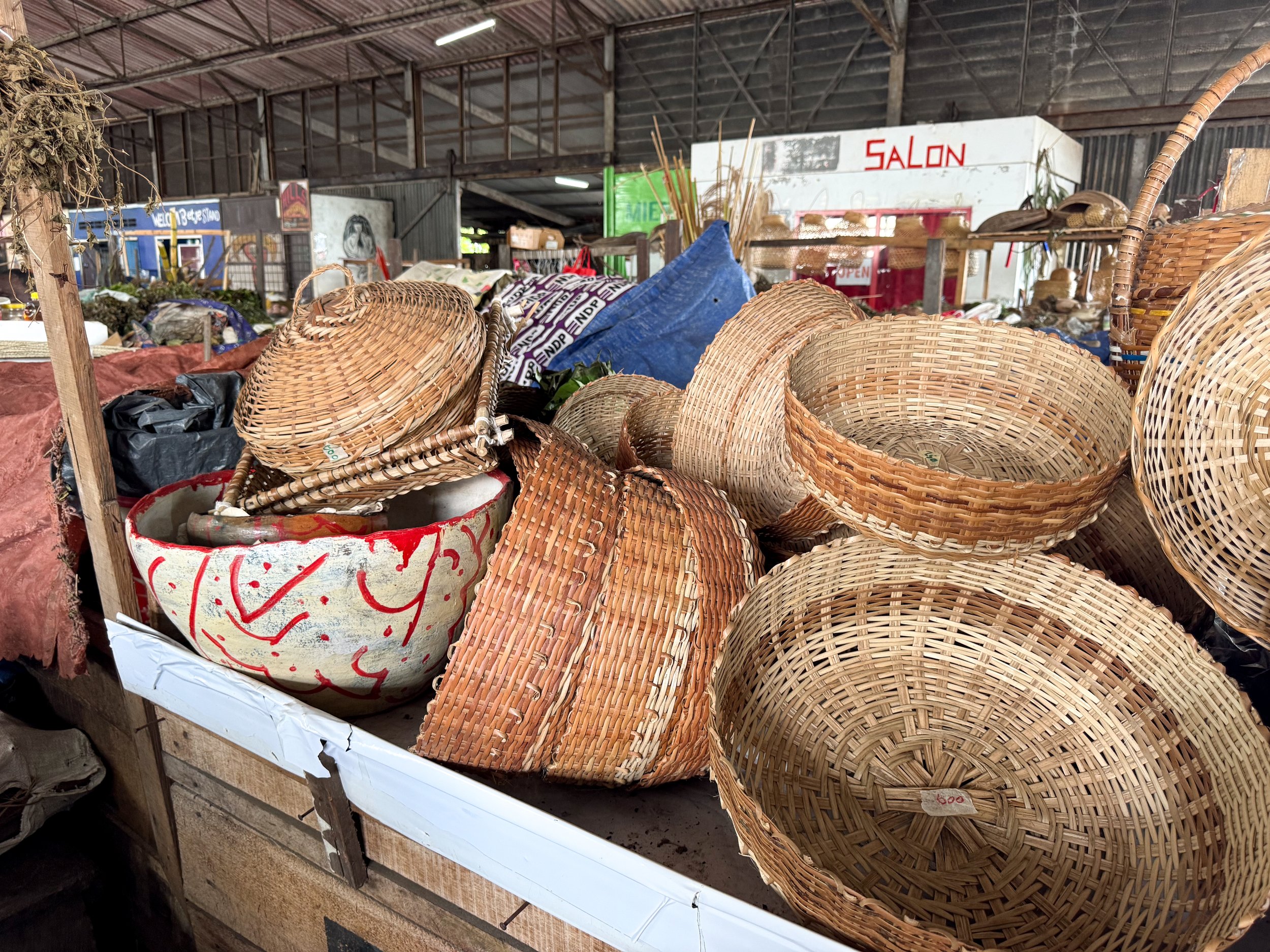
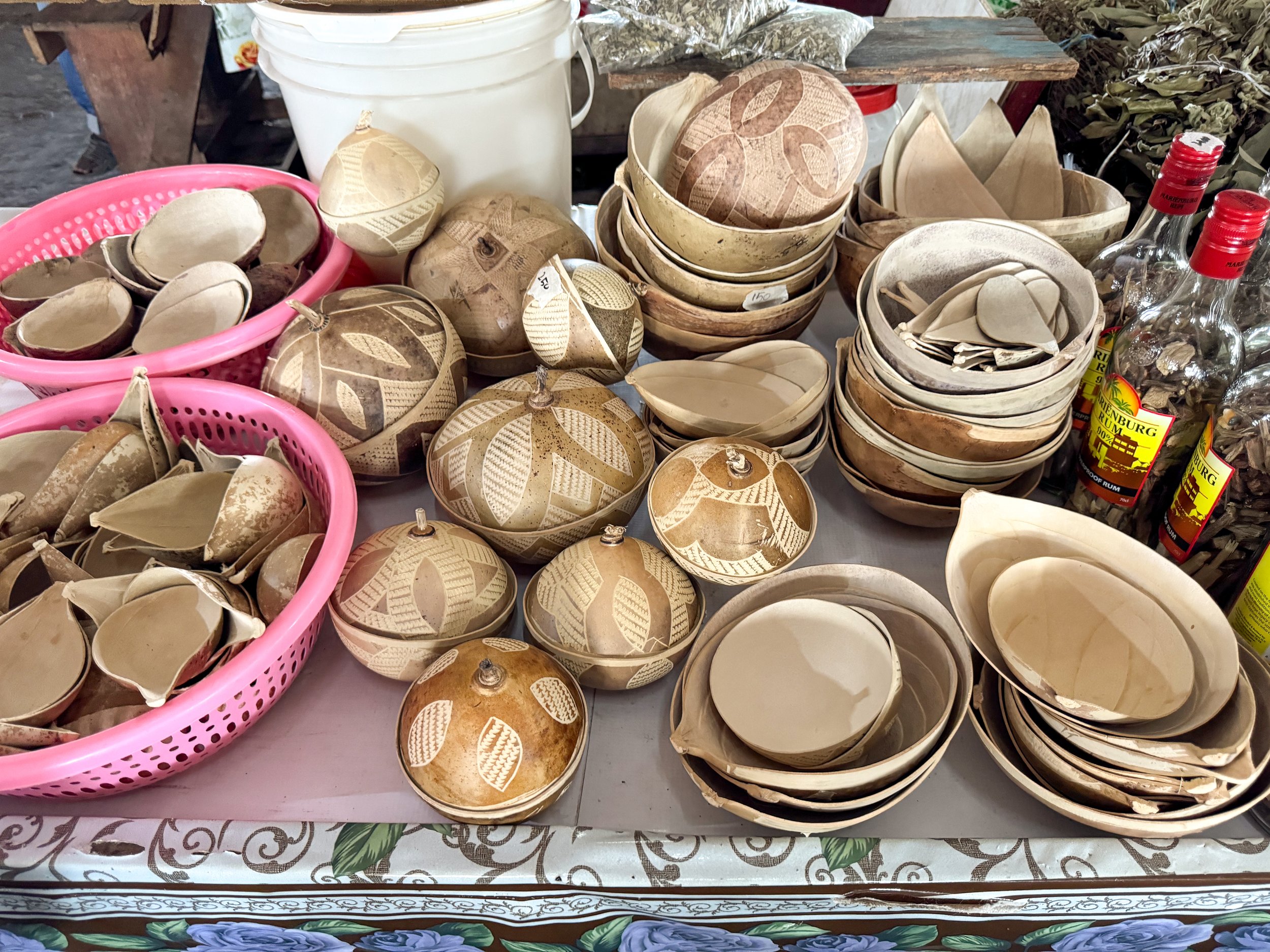
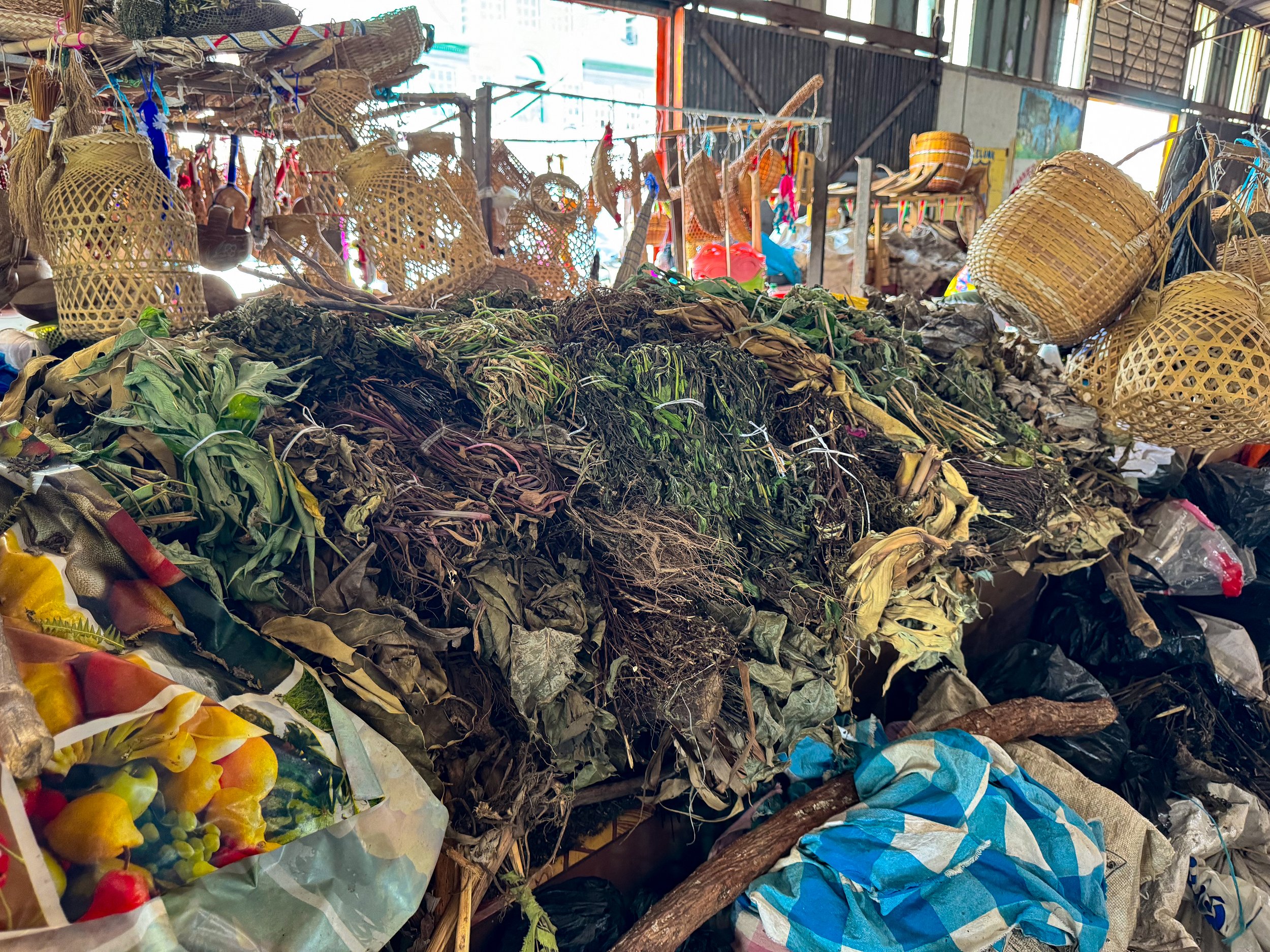


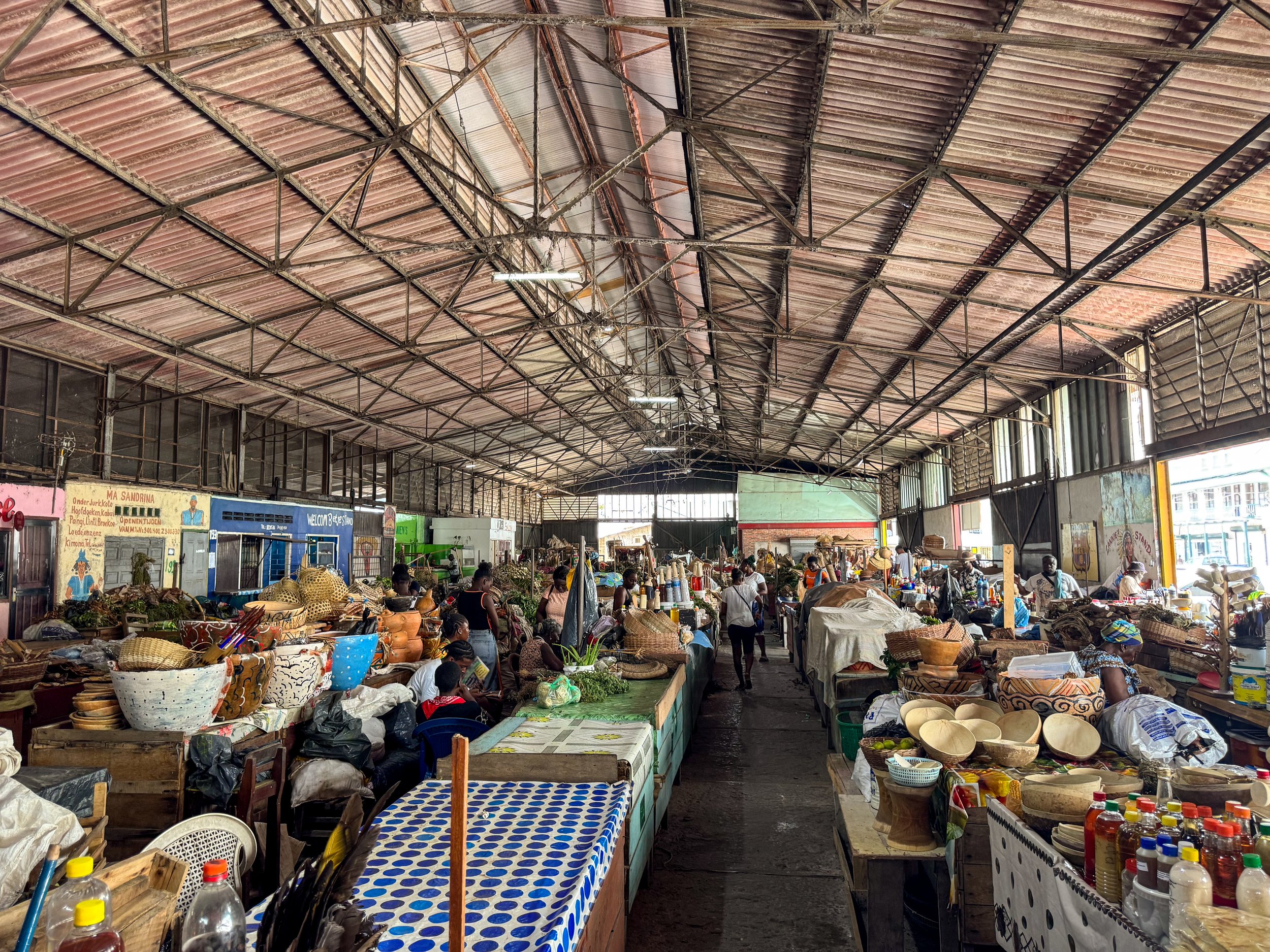
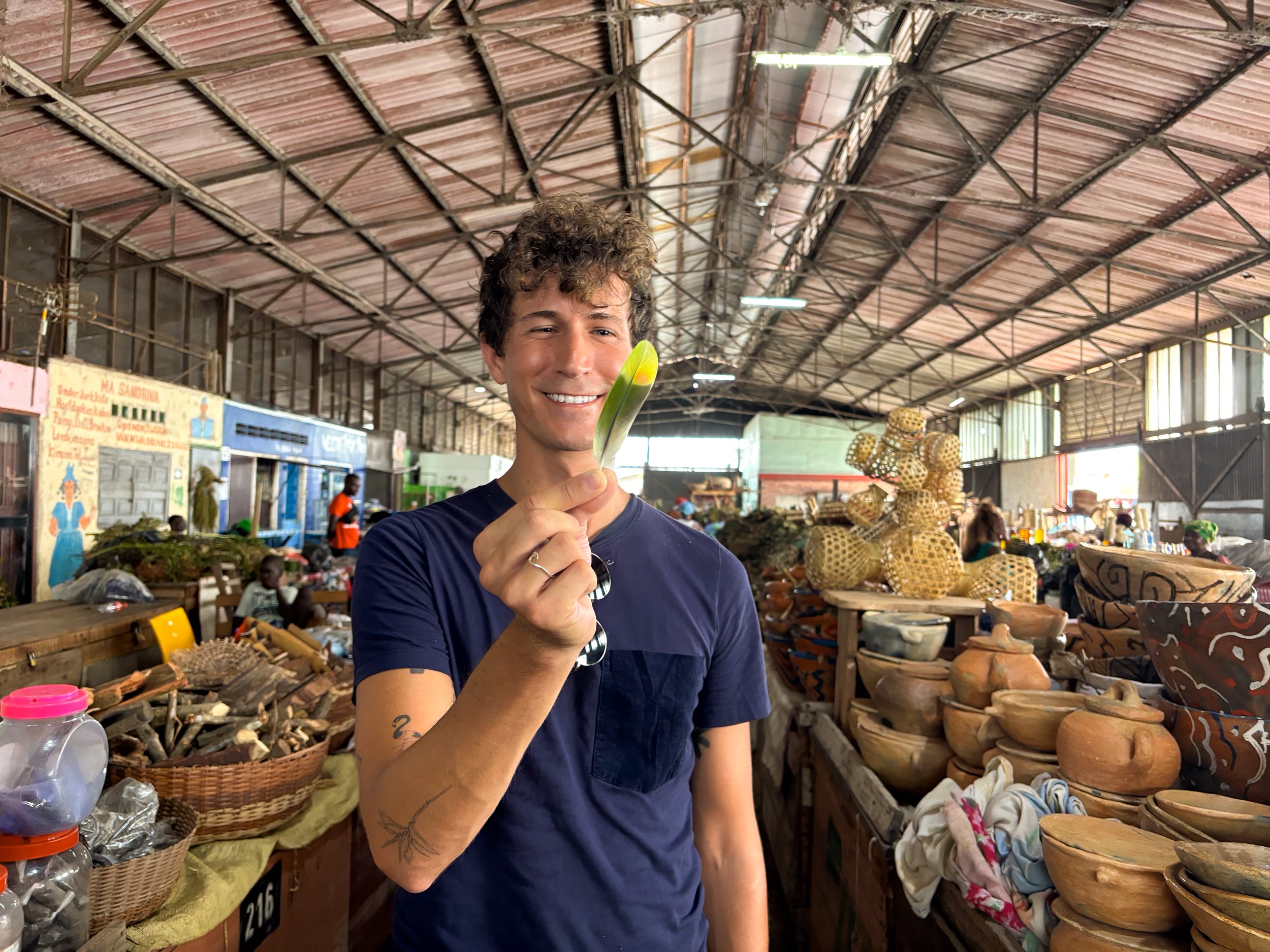


Markets
Maroon Market. A market with Maroon women selling organic and handmade items from the Surinamese Amazon. Across the tables of the dimly lit shed are jars with colorful feathers, stacked turtle shells, rams horns, large bunches of leaves used for washing with, oils for skin and hair care, pieces of bark and dried tree sap for burning as incense, wood and root used for medicinal purposes, cassava flower and spices. The women here are friendly and spoke with us about what several items were and how they’re used. Other vendors sell beautifully woven baskets, painted clay pots, bowls carved out of gourds and beaded necklaces.
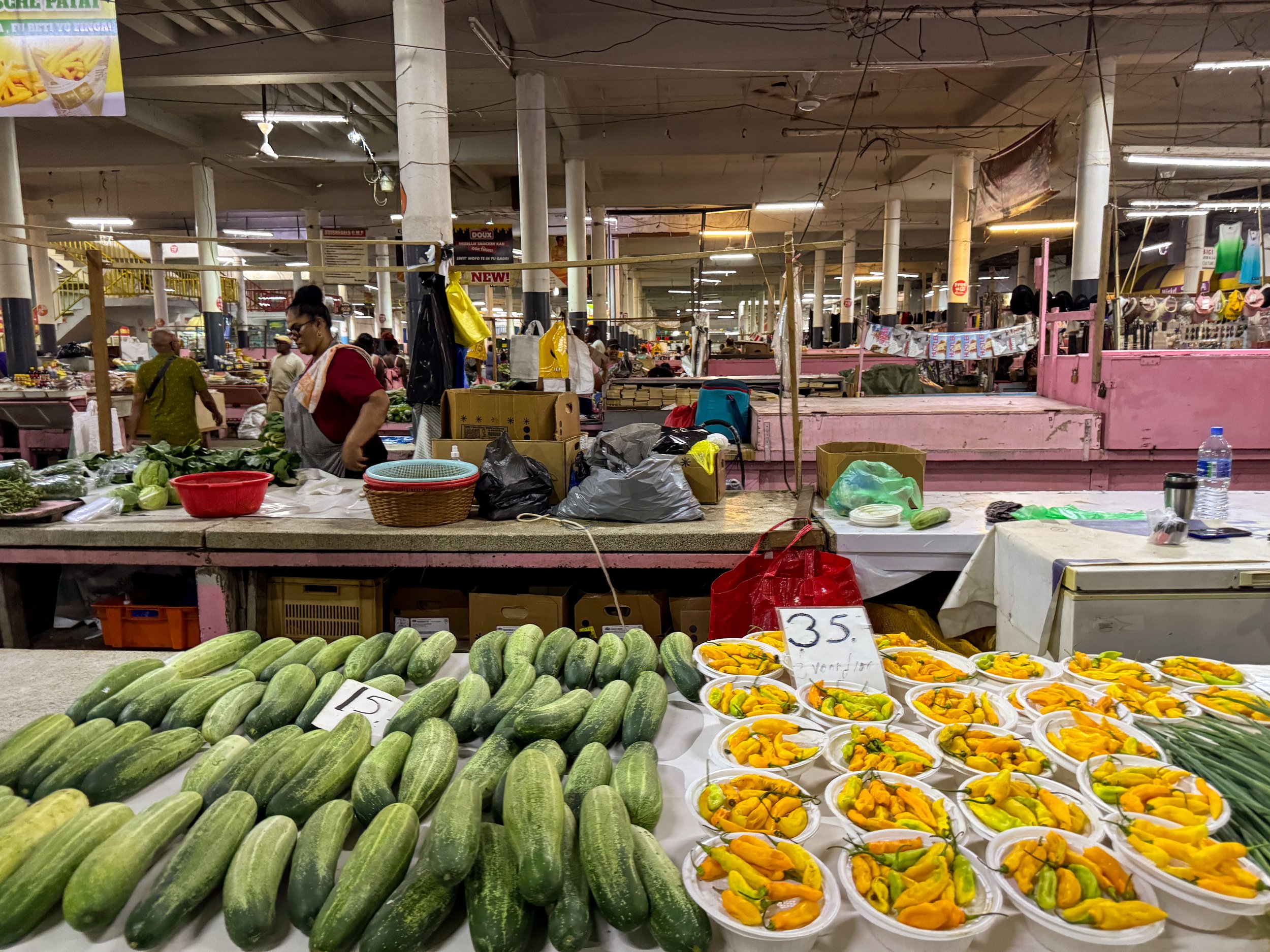
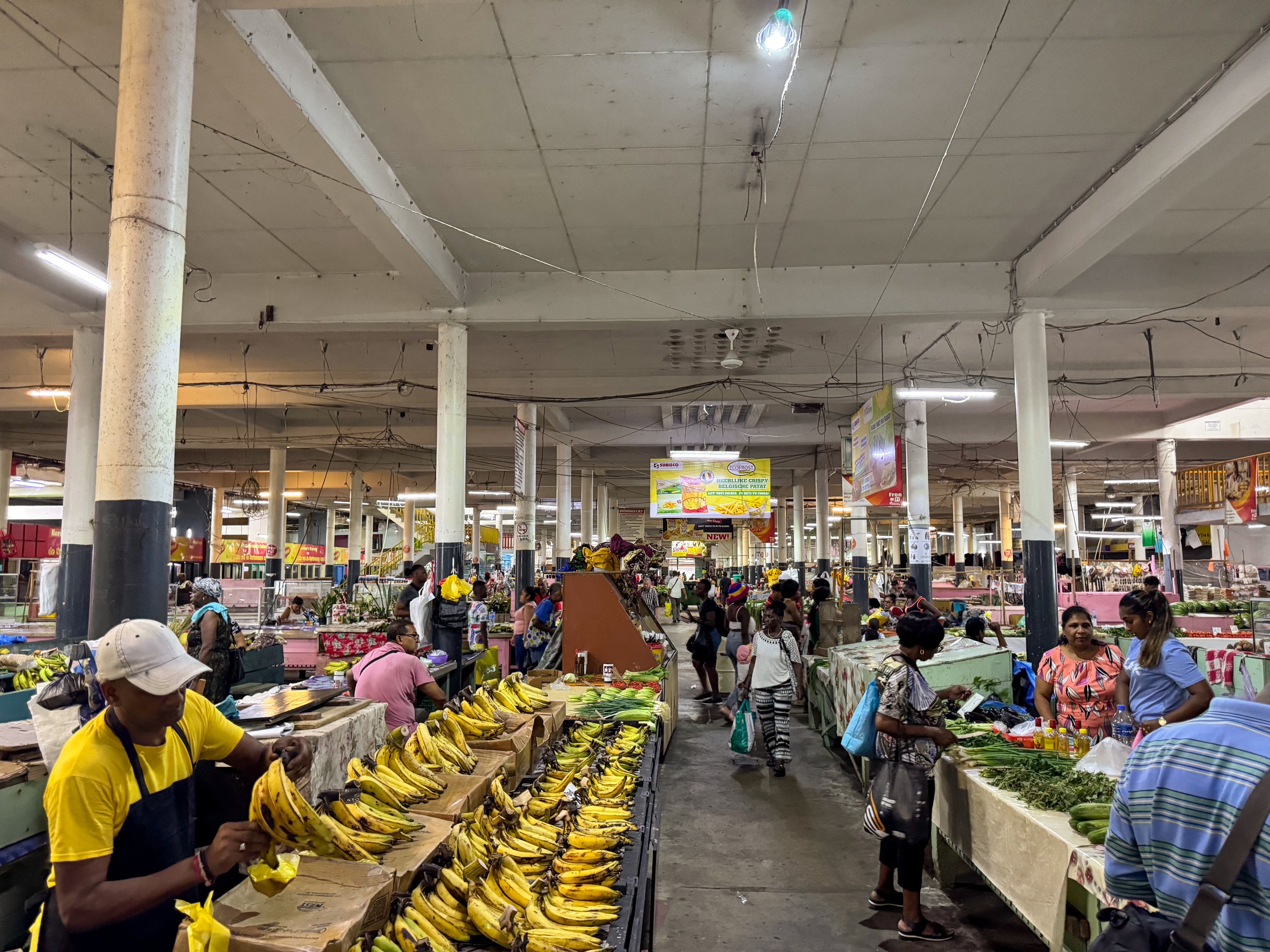
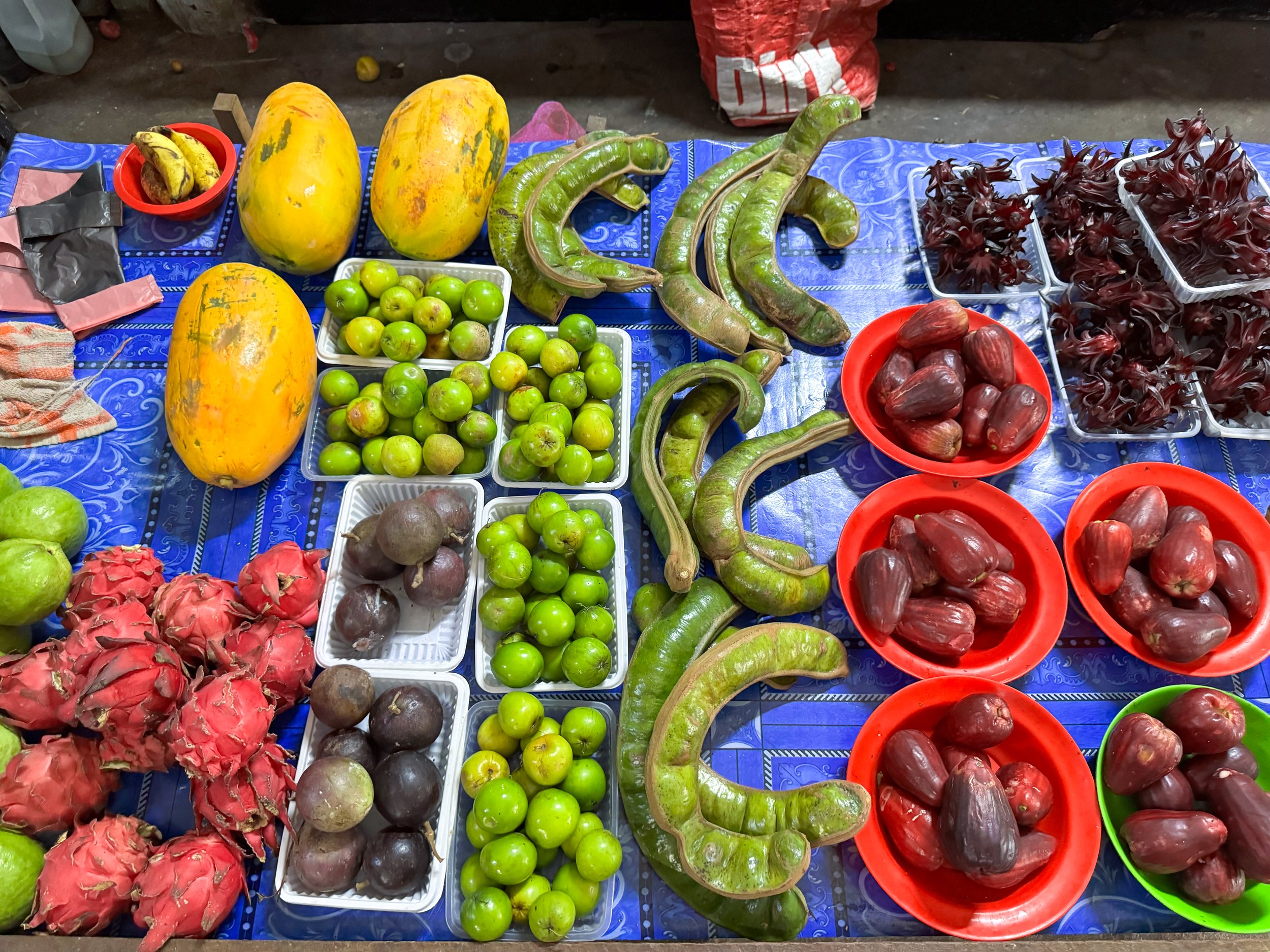
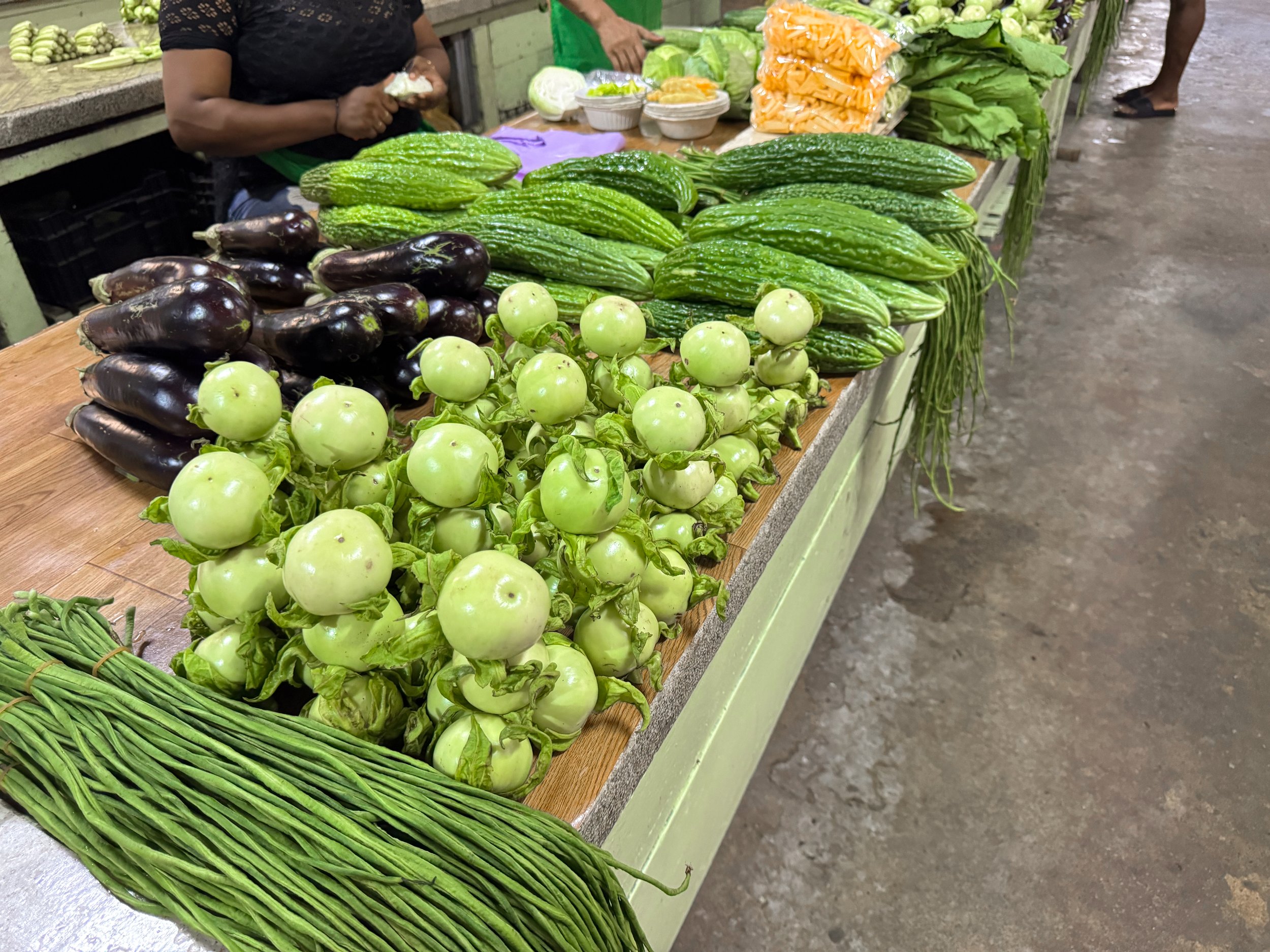
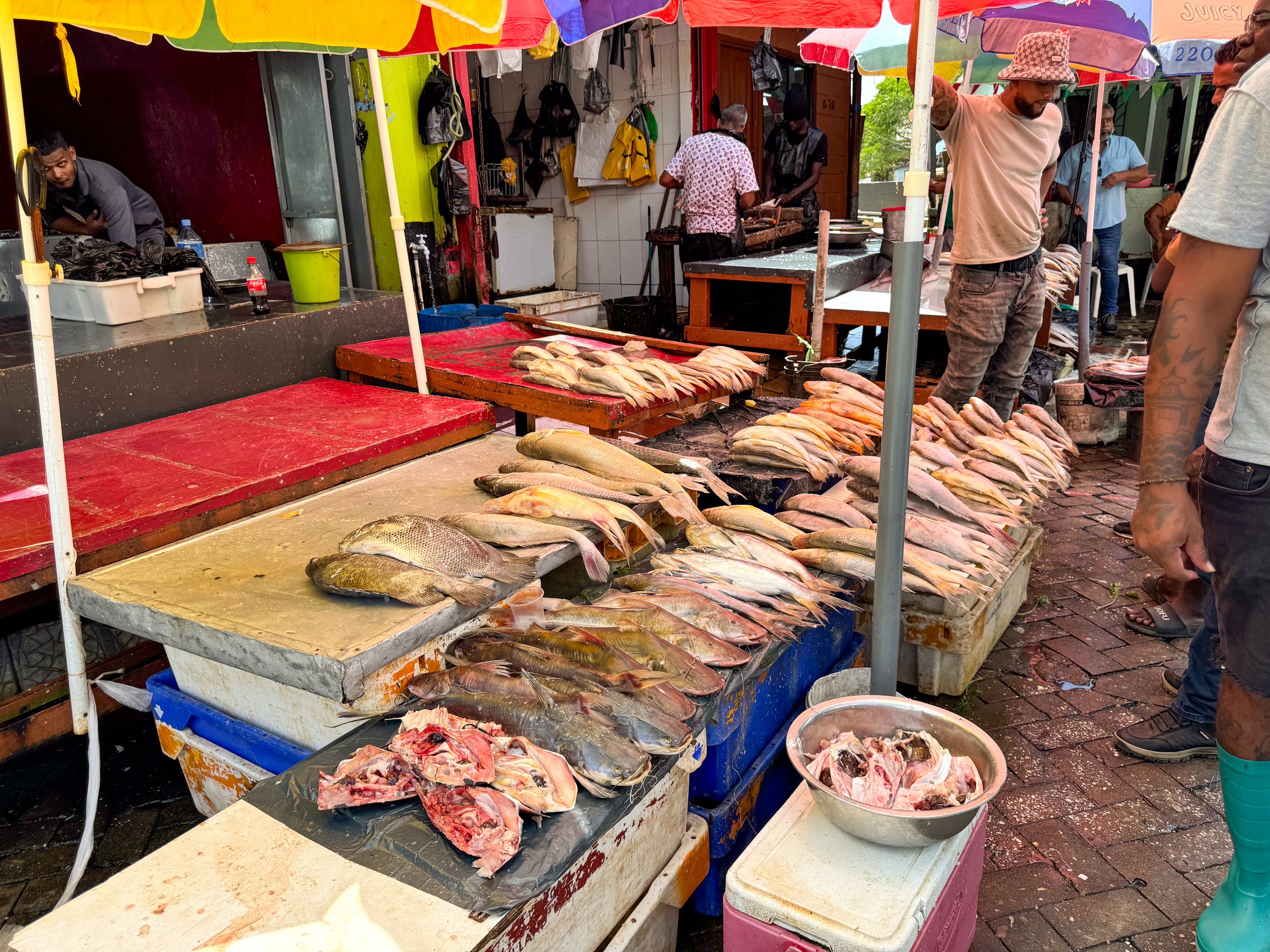
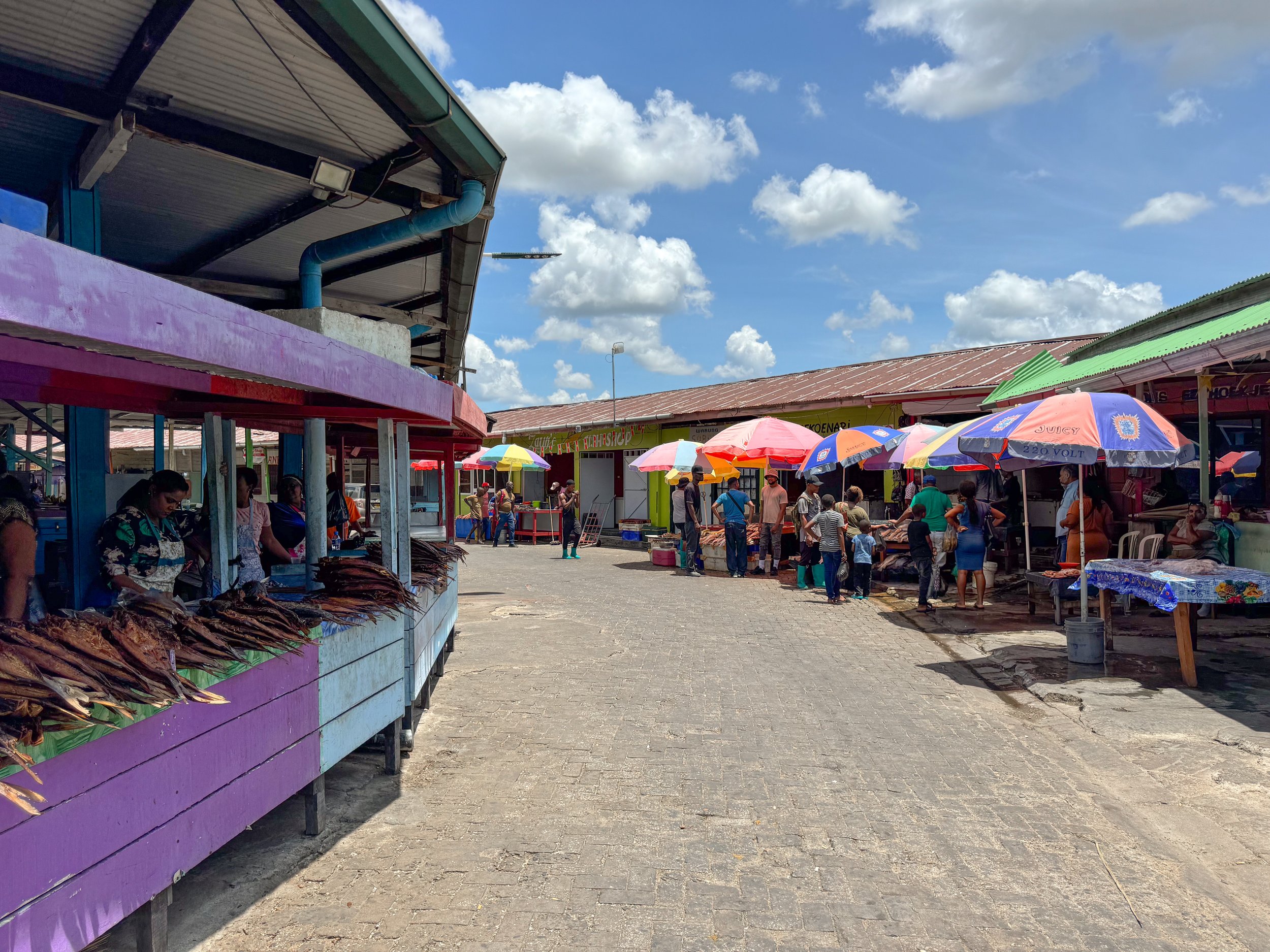

Central Market. A large market with vendors selling local produce, fish (fresh, smoked and salted), meats, live chicken, herbs, spices, oils, sauces, dried noodles, rices, cassava and plantain chips. We spent over an hour walking from table to table inspecting the exotic fruits, bunches of herbs and carefully stacked arrangements of vegetables before returning to buy groceries to prepare our own meals.
For breakfasts, we ate Amazon fruits. For one dinner, we cooked Heri Heri, Suriname’s national dish. The dish is made with an assortment of boiled vegetables including cassava, white sweet potato, potato, yellow plantain and green plantain served with fried salted cod, yardlong beans and a hard boiled egg.
Exotic Vegetables
Yardlong Beans. Very long thin strands of green bumpy beans.
Antroewa. A small round and green eggplant.
Sopropo. A bitter melon that has to be cooked. It looks like a bumpy cucumber.
White Sweet Potatoes. Small potatoes with a brown skin, white interior and sweet savory flavor.
Kaisoi. A large leafy green similar to spinach.
Exotic Fruits
Pommerak. A tasty deep pink pear shaped fruit with sweet and starchy flavor. Can bite right into it.
Rose Apple. A tiny pinkish red pear shaped fruit that tastes slightly sweet and floral. Can bite right into it.
Star Apple. A fruit similar in flavor to a lychee with the exterior of a passion fruit. Cut in half & spoon out the fruit.
Pomelo. A giant grapefruit with a light and refreshing flavor. The strands of fruit easily pull out of each slice.
Other more commonly known vegetables and fruits sold at the market are plantains, okra, turmeric, cassava, squash, oranges and watermelon.
Deserts
Boyo. A semi sweet cake with a gelatinous spongy texture made from cassava and coconut.
Fiadu. A sweet cake made with raisins, currants, almonds and citrus.
Drinks
Parbo Bier. A classic Pilsner brewed in Paramaribo.
Parbo Bier Chiller Lime. A refreshing local beer with flavors of lime and passion fruit.
Fruit Stands. There are colorful and fragrant fruit stands around the outer roads of Paramaribo. We stopped at one for a fresh coconut, mango and pineapple for breakfast.
Waka Pasi. An outdoor market along the canal behind the Palmentuin with cocktail bars, cafes, ice cream shops, souvenir stands, a tourist desk and vendors selling fried foods.
Where to Eat & Drink
Raja Ji. An Indian restaurant with a wide range of vegetarian dishes cooked in savory sauces and warm spices.
Souposo. A cafe with Surinamese soups. Try the Peanut Soup made from peanuts, plantain, spices and smoked fish. Or try the Saoto Soup, a savory vegetable soup with greens, spices, bean sprouts and ramen noodles.
Tangelo. A cafe with strong coffee, artesian pastries, fruit forward breakfast dishes and savory bites with Indian spices. Try the Aloo Gobhi Pita with spiced cauliflower, potato and chickpeas.
Sweetie Coffee Suriname. A cafe at the Waka Pasi market with shaded seating, coffee, water, beers and homemade cakes.
Coffee Mama. A cafe in a Dutch colonial house with a cozy backyard. Come here for the coffee, Surinamese, Caribbean and Brazilian snacks, breakfast and lunch dishes.
The Surinamese Amazon
With its lush jungles, flowing by rivers and immense biodiversity, Suriname resides firmly in the Amazon Basin with over 90% of its landmass covered by rainforest. We traveled into this region and spent 4 days at the Anaula Nature Reserve.
Anaula Nature Reserve
Anaula is an eco-resort on an island in the Suriname River with jungle bungalows, nature trails, natural river pools, cultural activities and prepared local dishes. We spent our time relaxing in nature, exploring the Amazon and experiencing the local culture through tours and cuisine.
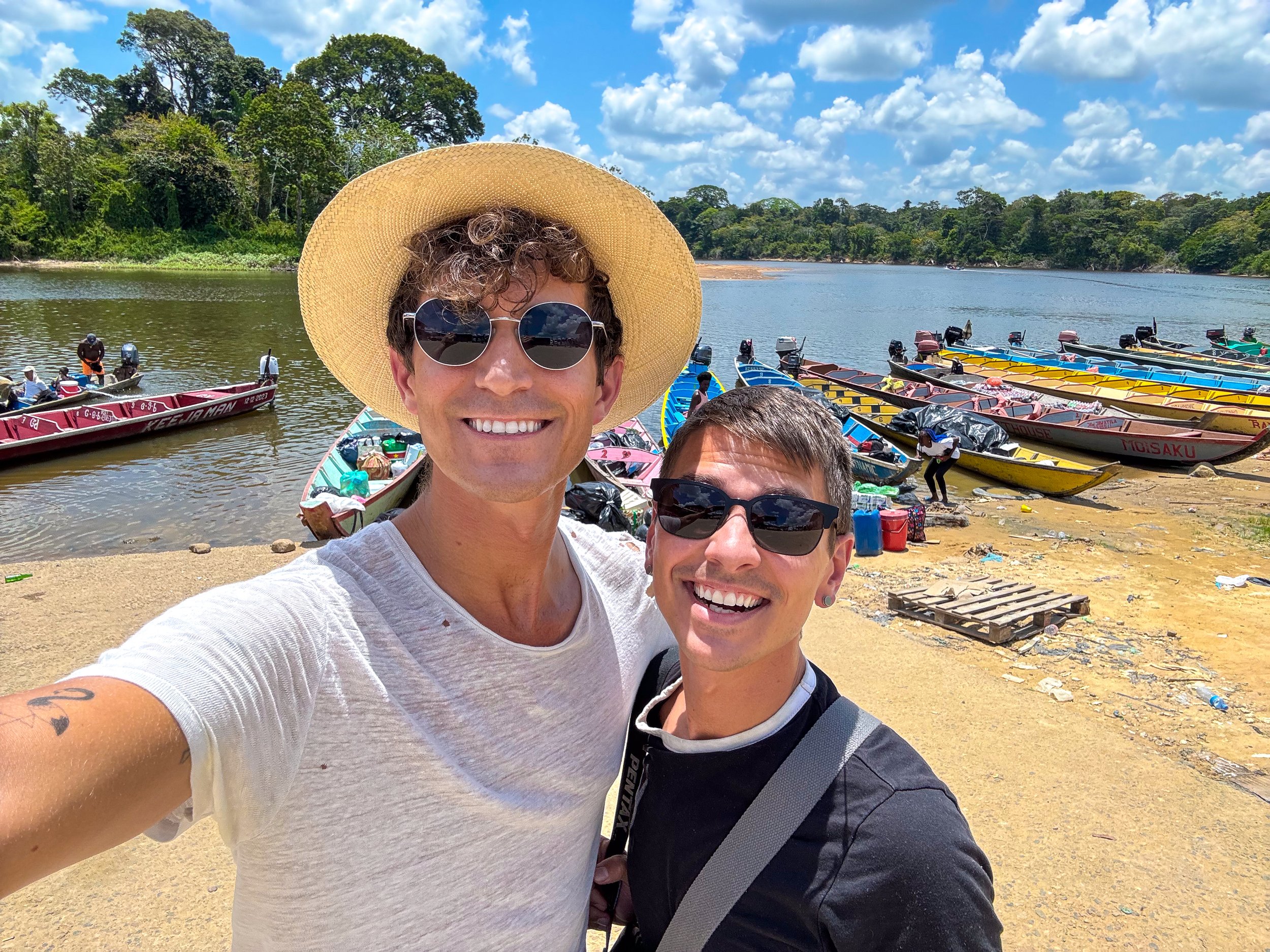

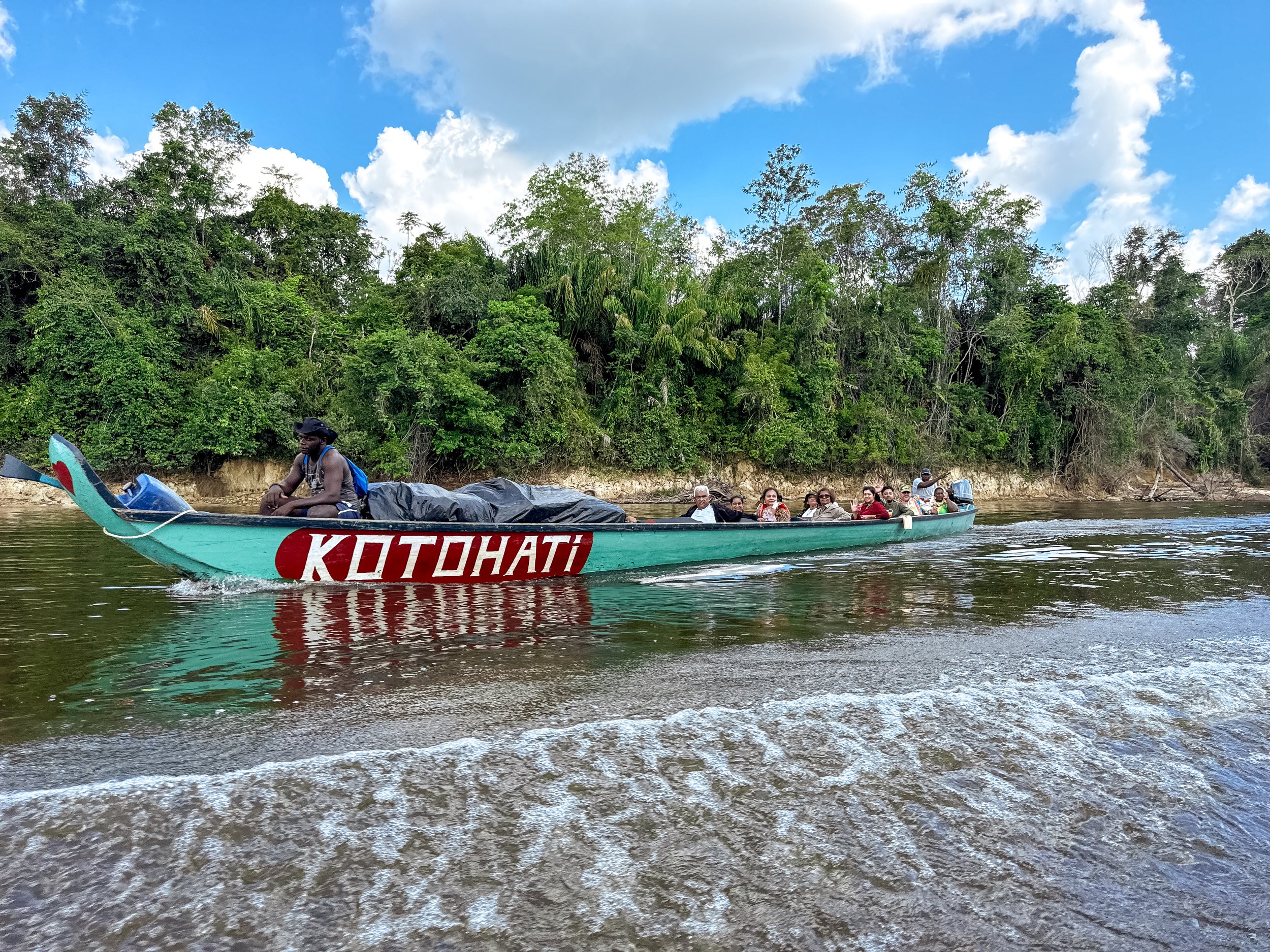
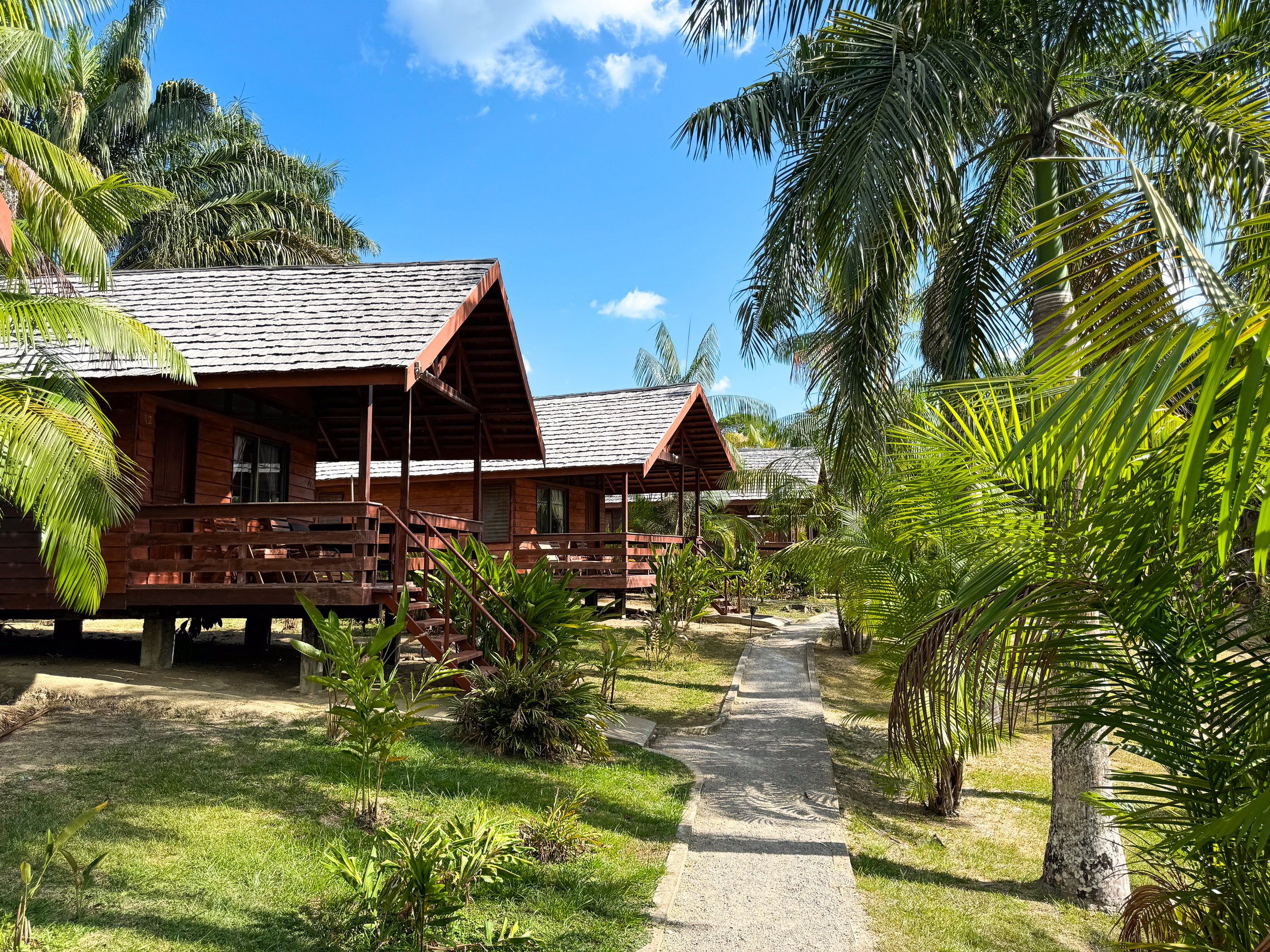
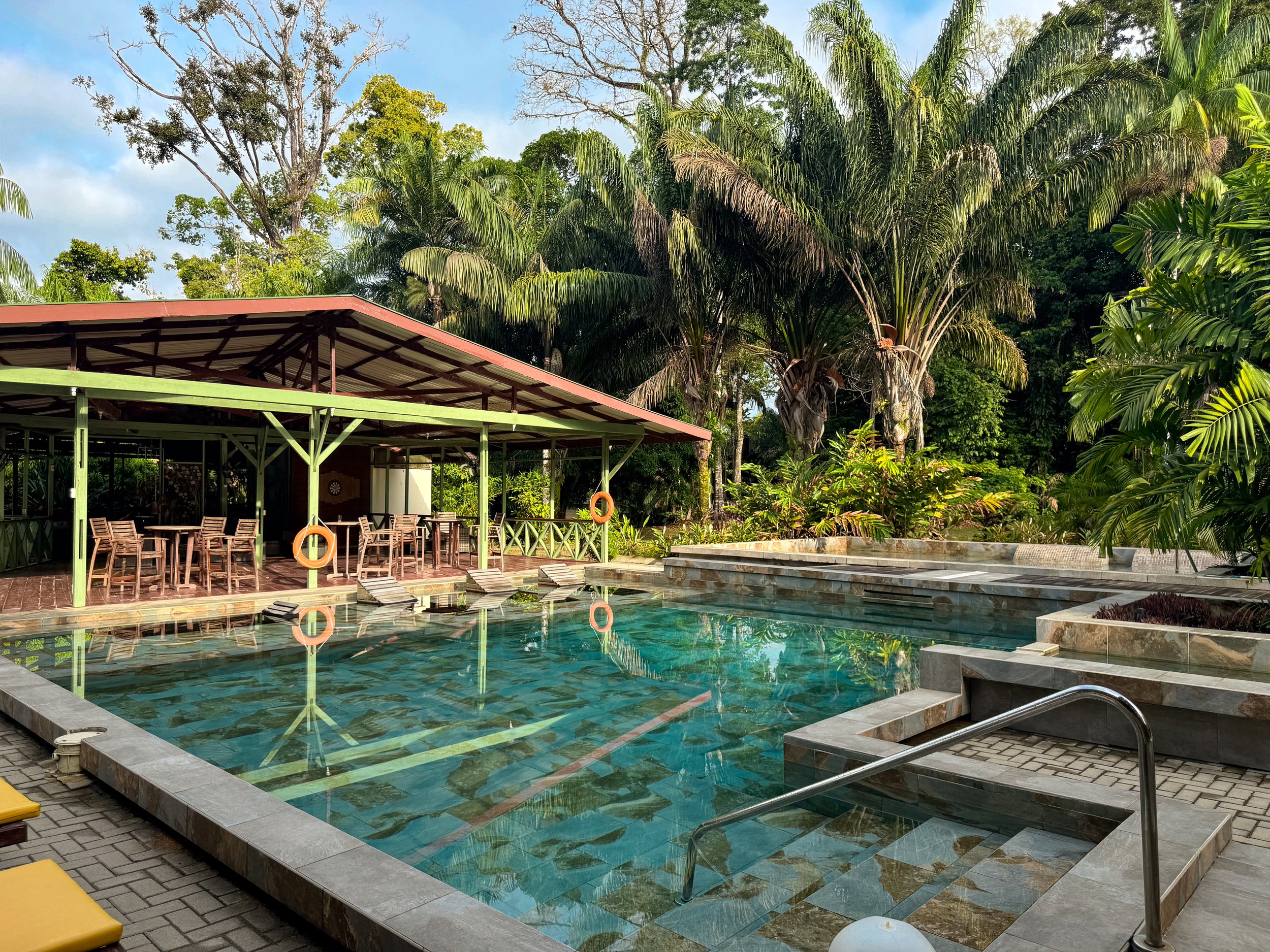

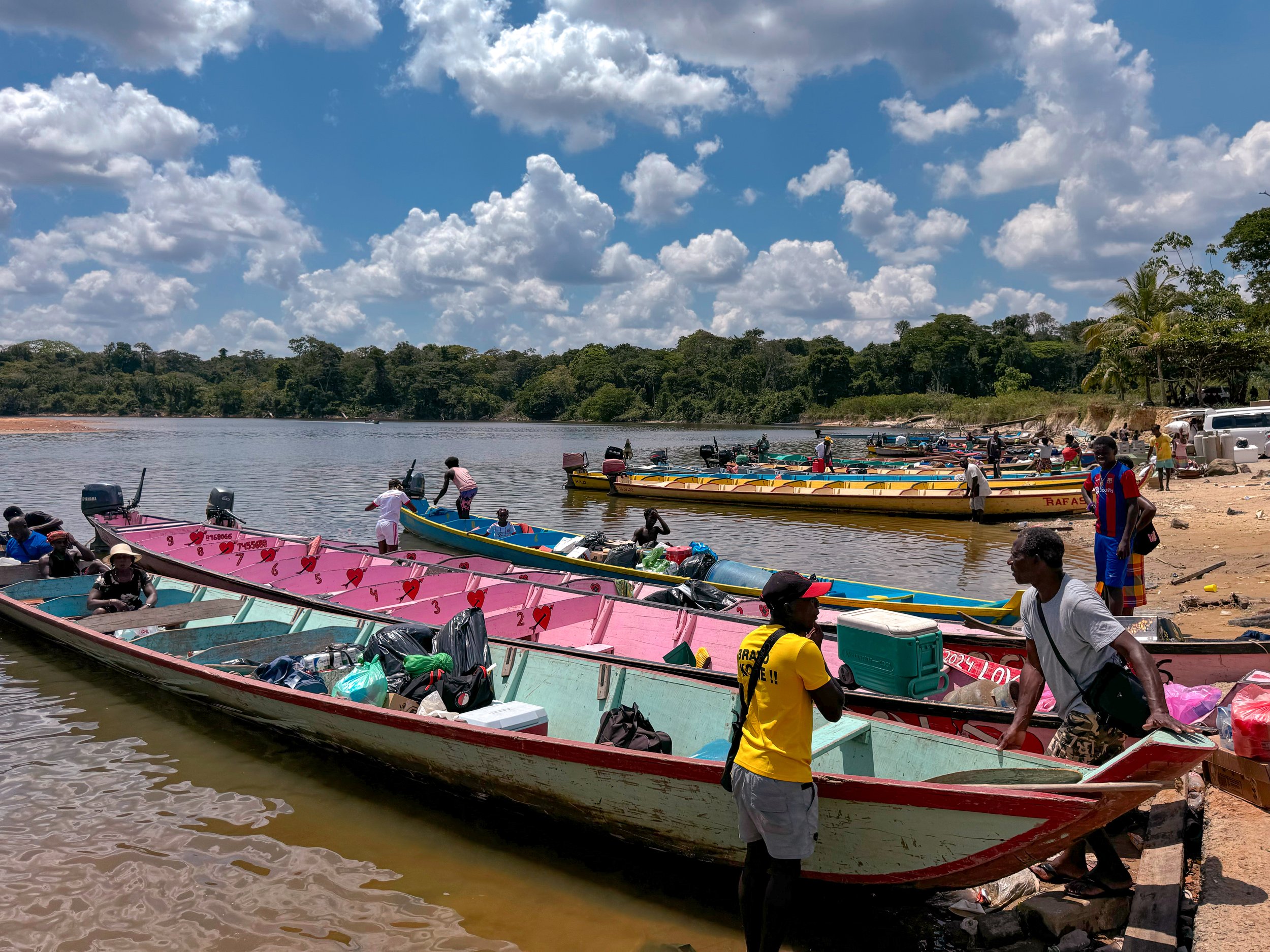
Day One
Day one was all about the journey and exploring the eco resort.
Getting Here
From Paramaribo, we took a 4 hour bus ride towards the interior of the country until reaching the port of Atjoni on the Suriname River. At this point, the only method of transportation further into the country is by motorized dugout canoe.
As we waited for our captain, guides tossed our bags onto a canoe ferrying everything from luggage, bulk groceries, small appliances, large propane tanks and corrugated metal. Once on the river, we glided through the brown water and looked upon the lush tree lined banks, passing several Maroon villages, locals swimming in natural river pools and washing clothes. The captain skillfully weaved the long canoe past rocks, sand bars and oncoming boats.
Towards the end of the journey, we passed through The Jaw Jaw Rapids, a notoriously turbulent section of the river. The captain sped the boat up the rapids through a narrow passageway where we hit and bounced off a rock but were redirected by several men waiting to steer us back on course. Once successfully passing through, the others re-boarded the boat and we continued the journey, docking at Anaula after a total 1 hour and 15 min canoe ride.
Arrival at Anaula
The resort has beautiful wooden bungalows and open air amenities like a dining hall where meals are served, a lobby with wooden lounge furniture, a relaxing outdoor pool and river overlooks with hammocks.
The beautiful property is built on an island, surrounded by lush Amazonian trees and views of the rapids. We used down time to wade in the surprisingly warm shallow river pools, bird watch and stargaze upon the Milky Way. In the middle of the night a strong rainstorm provided white noise as we drifted asleep.
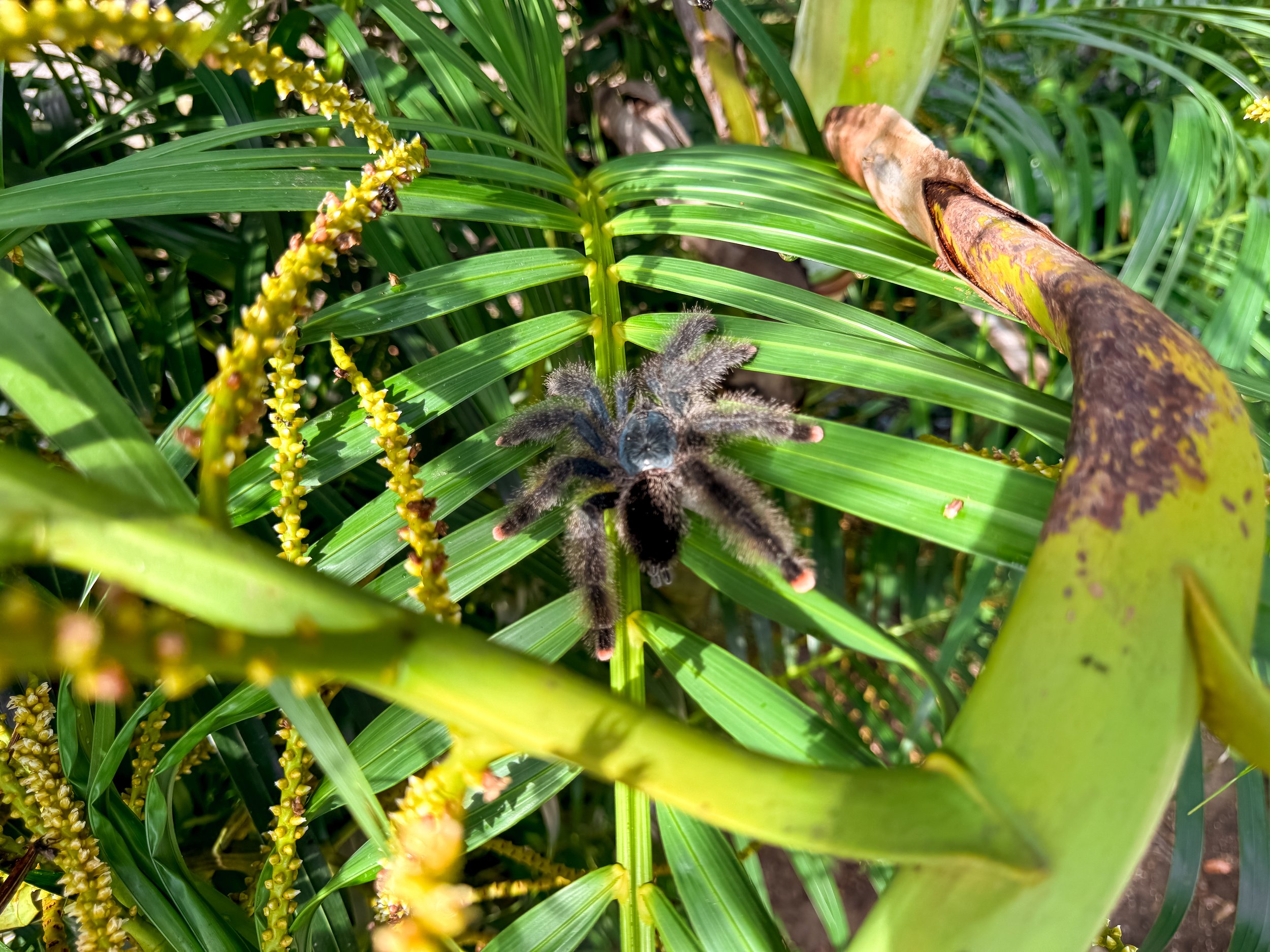
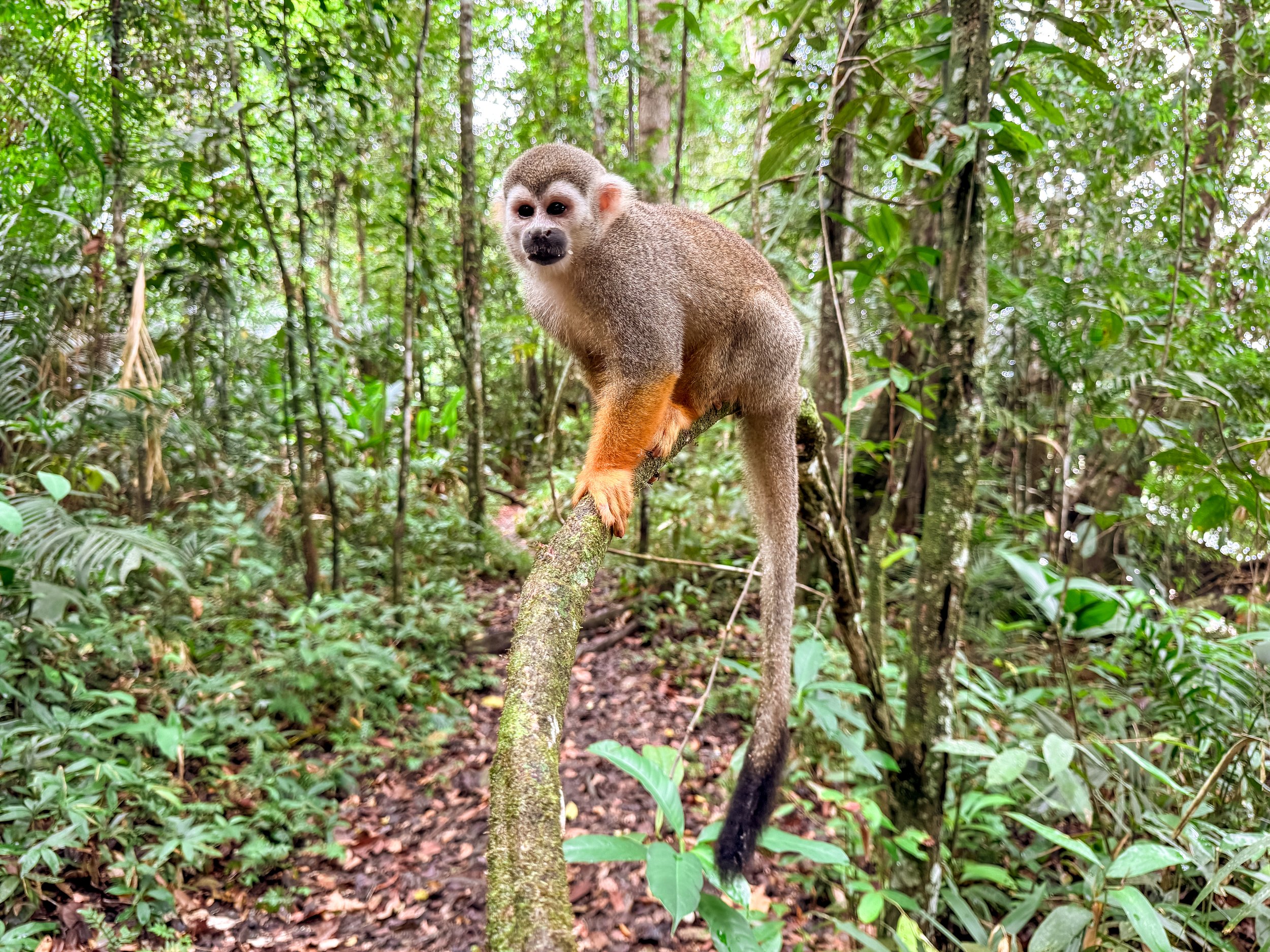
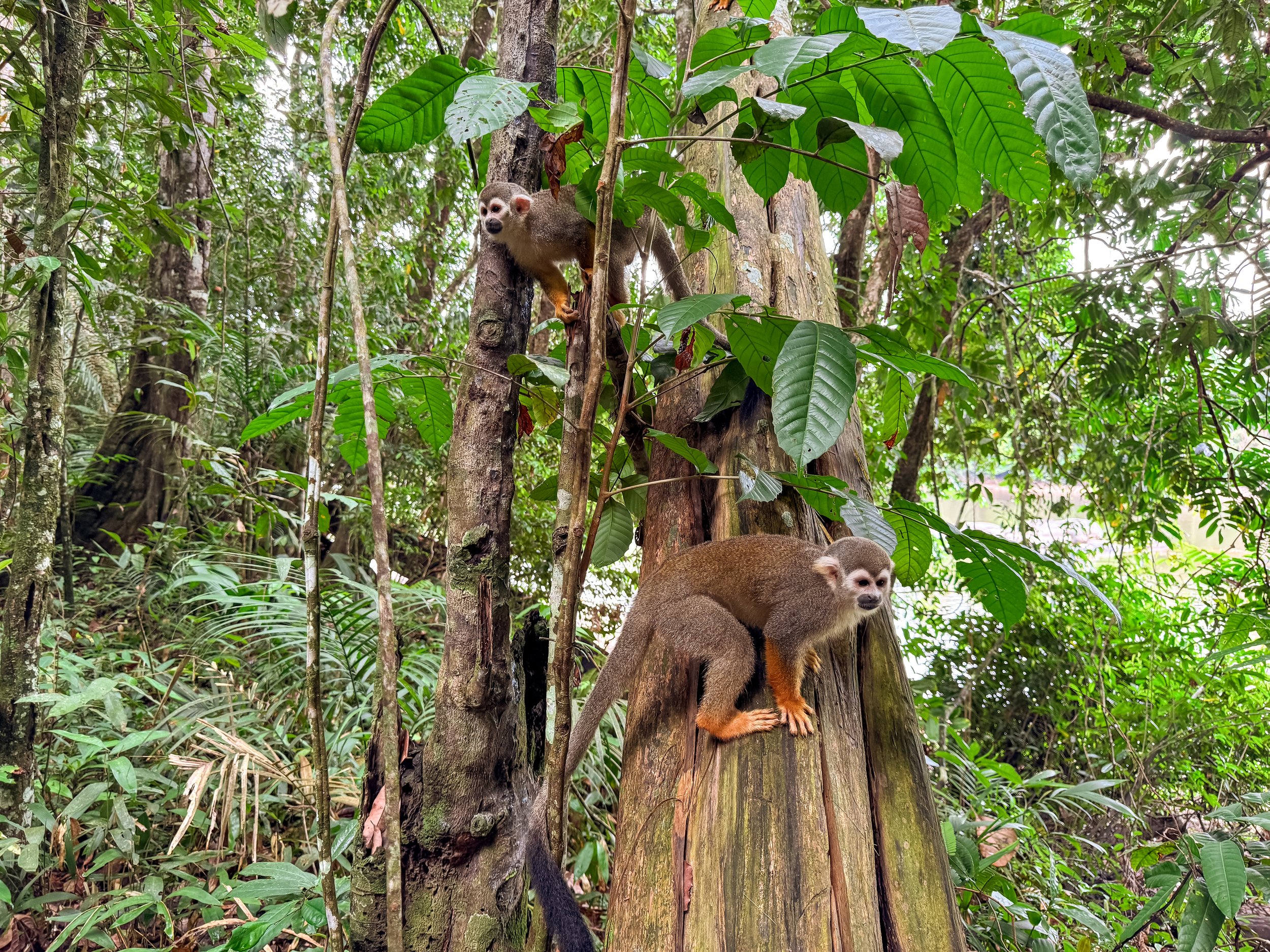
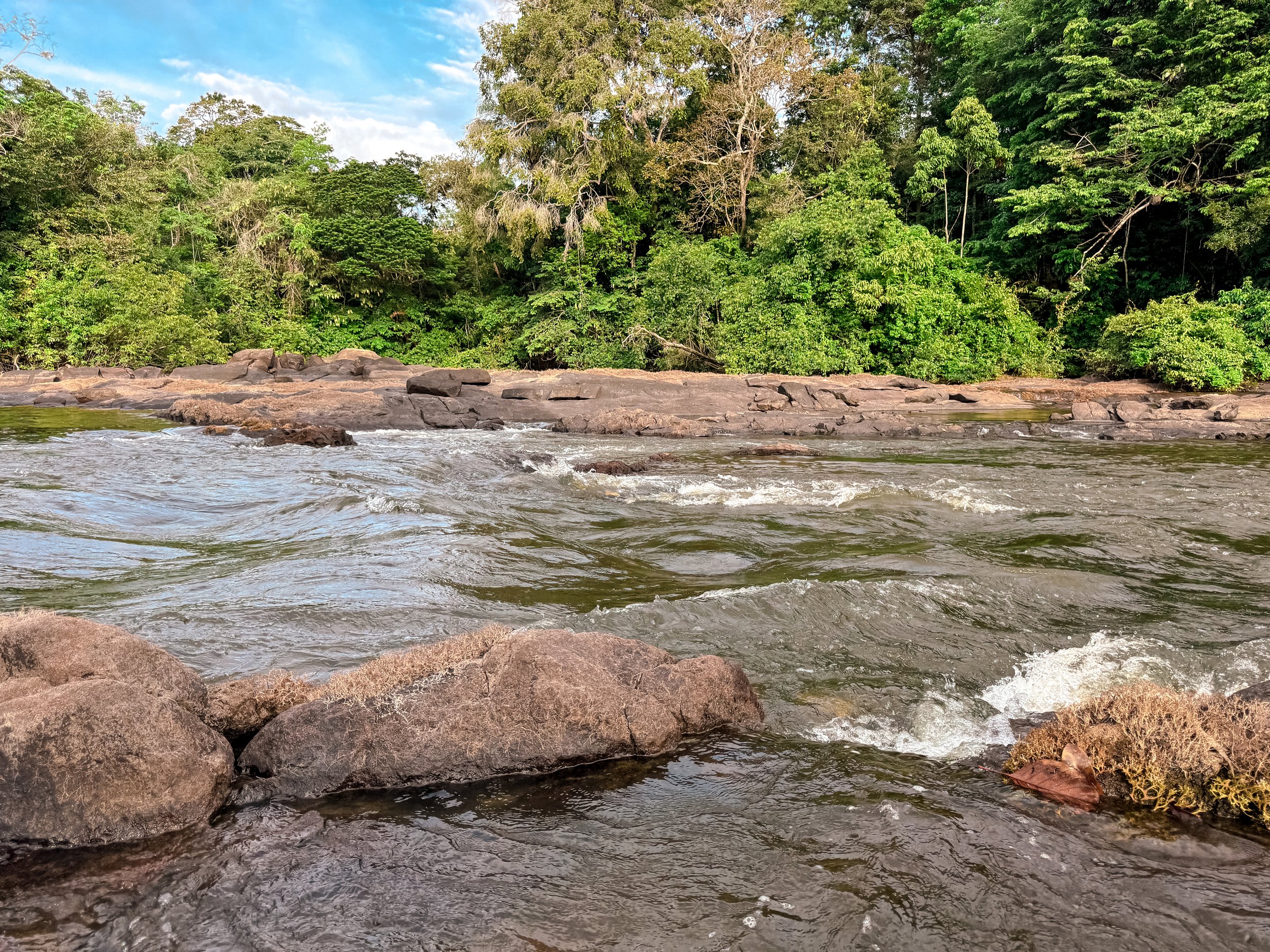
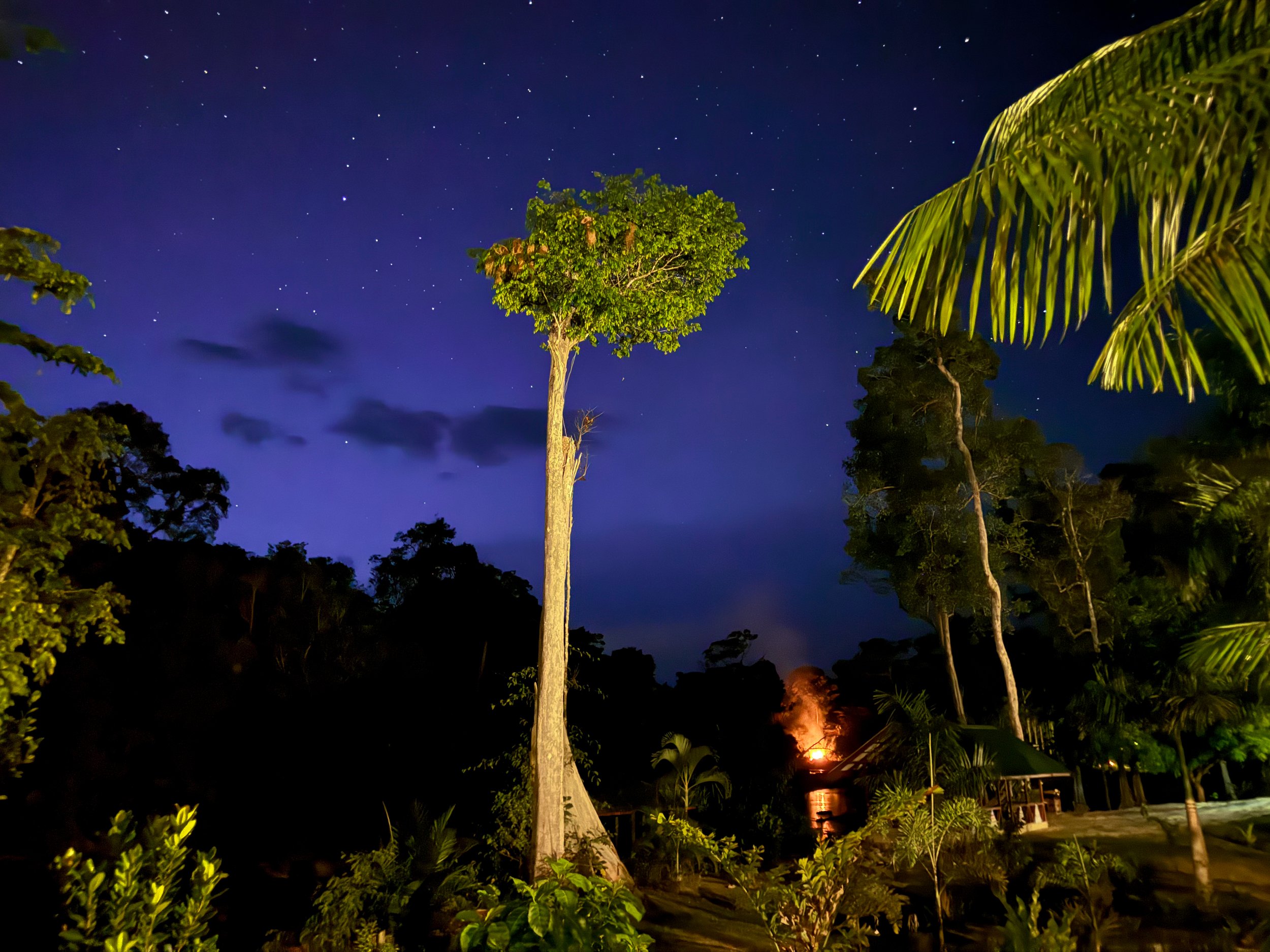
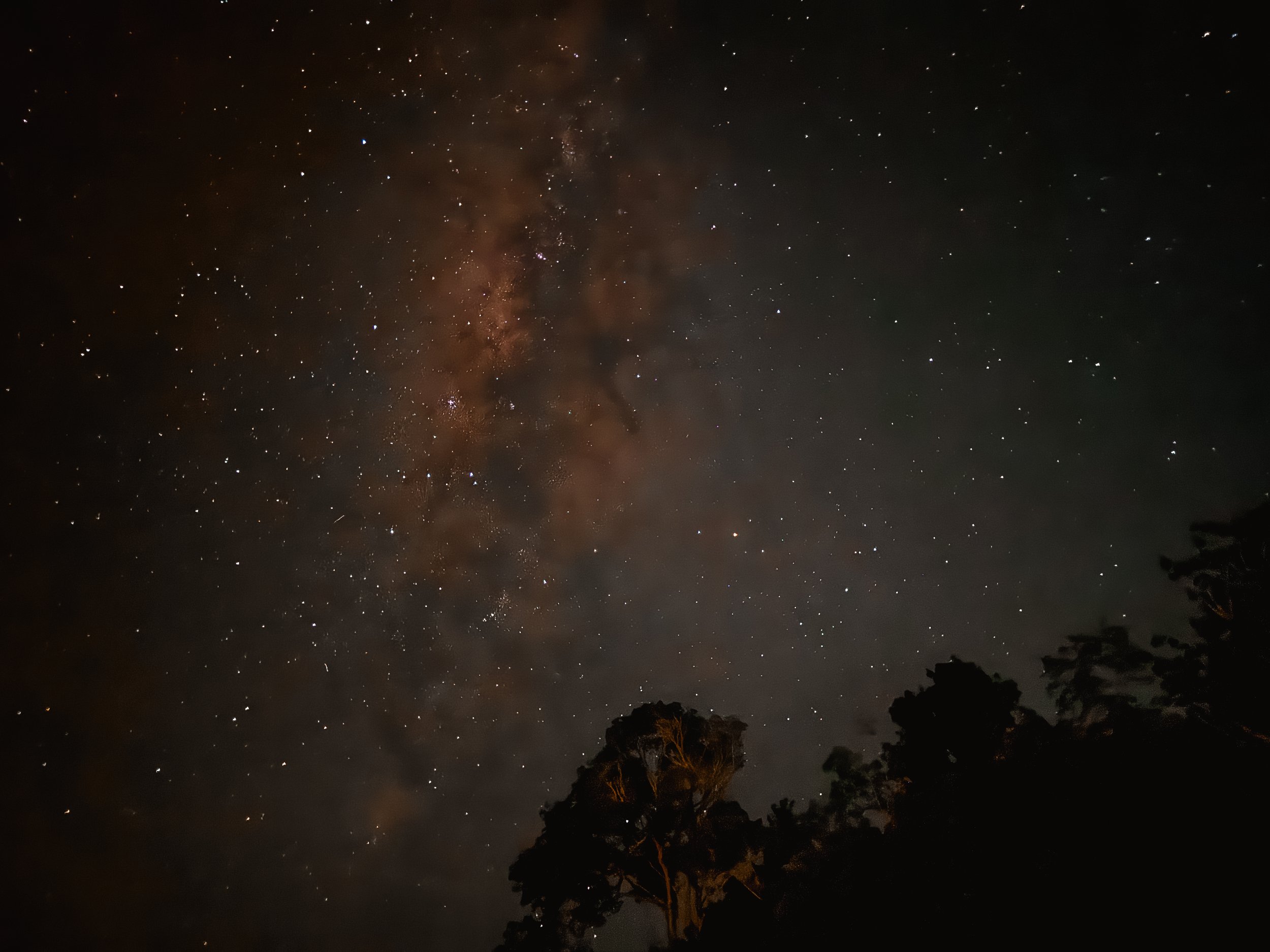

Day Two
Day two was all about exploring the island’s nature and wildlife.
Waking up in the Amazon
The noises of the rainforest, birds chirping, frogs croaking and cicadas humming all around our bungalow provided a fitting wake up call for our second day in the Amazon. At breakfast, our guide found a tarantula in the palm trees and placed it on us. The furry spider slowly crawled on our arms, applying subtle pressure as its tiny feet climbed.
Hiking the Amazon
We began our hike along the perimeter trail of the island, walking through dense primary forest with hundred year old trees and newly grown foliage. Along the way, our guide taught us Amazon survival skills including how to call for help if lost, snake warning signs and to learn from the monkeys to know what’s safe to eat.
Among the sounds of the rainforest, we heard some squeaks in the canopy and spotted a group of curious capuchin monkeys. Knowing we may have had food, the cute monkeys paid us a visit. We fed them pieces of banana which they quickly snatched from our hands while some even jumped onto our shoulder, wrapping their furry tails around our arms.
Nighttime Caiman Tour
As night fell, we took a canoe tour downriver to spot caiman under the stars. We shined a bright light towards the river bank, looking for the reflection of the caiman’s eyes. After several minutes, we caught an amber glow reflecting back. Our guide approached the small caiman and snatched it out of the water for everyone to see up close. After releasing it, we canoed further down river spotting one more, twice as large as the first, before returning back to Anaula.

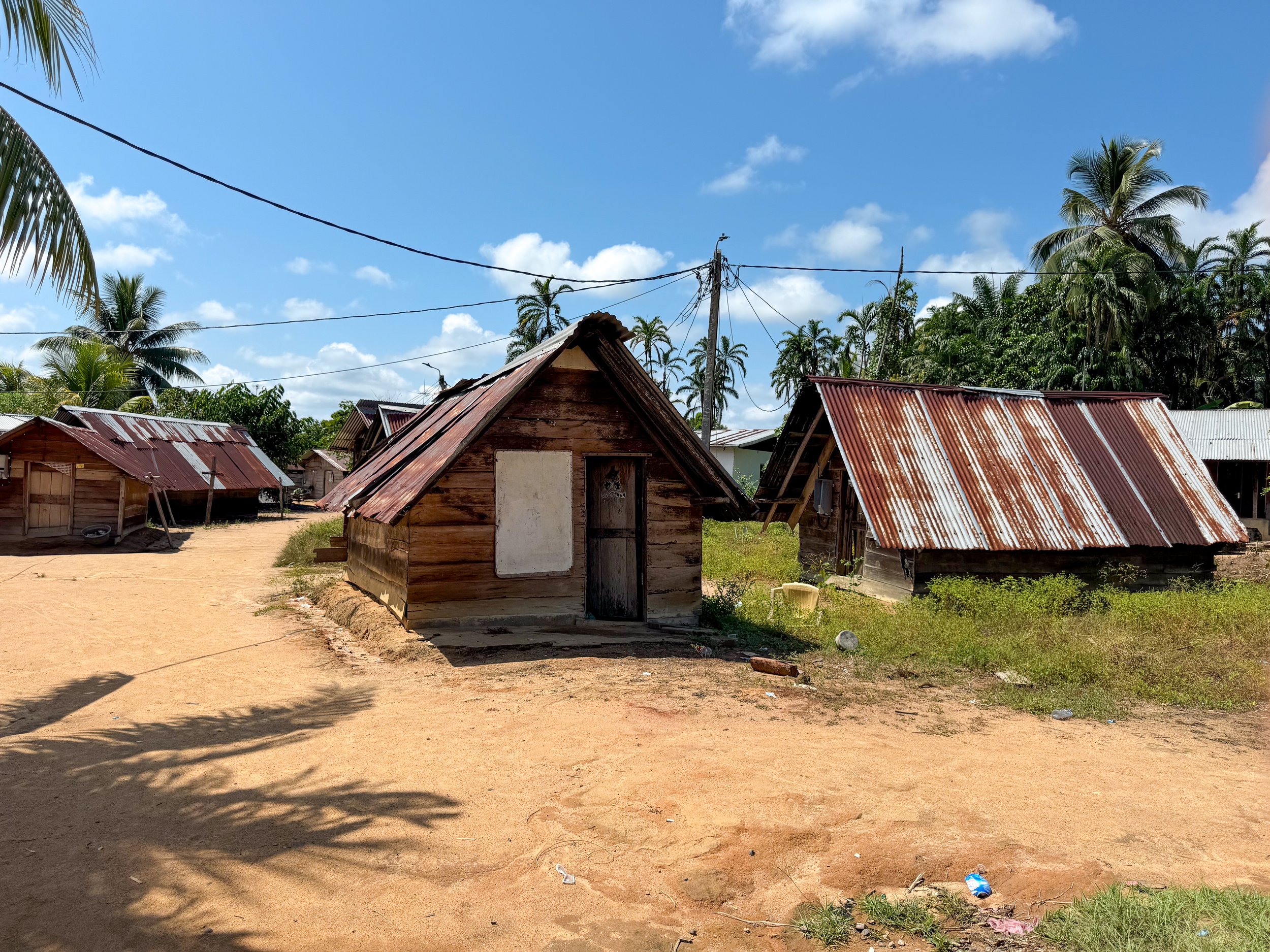
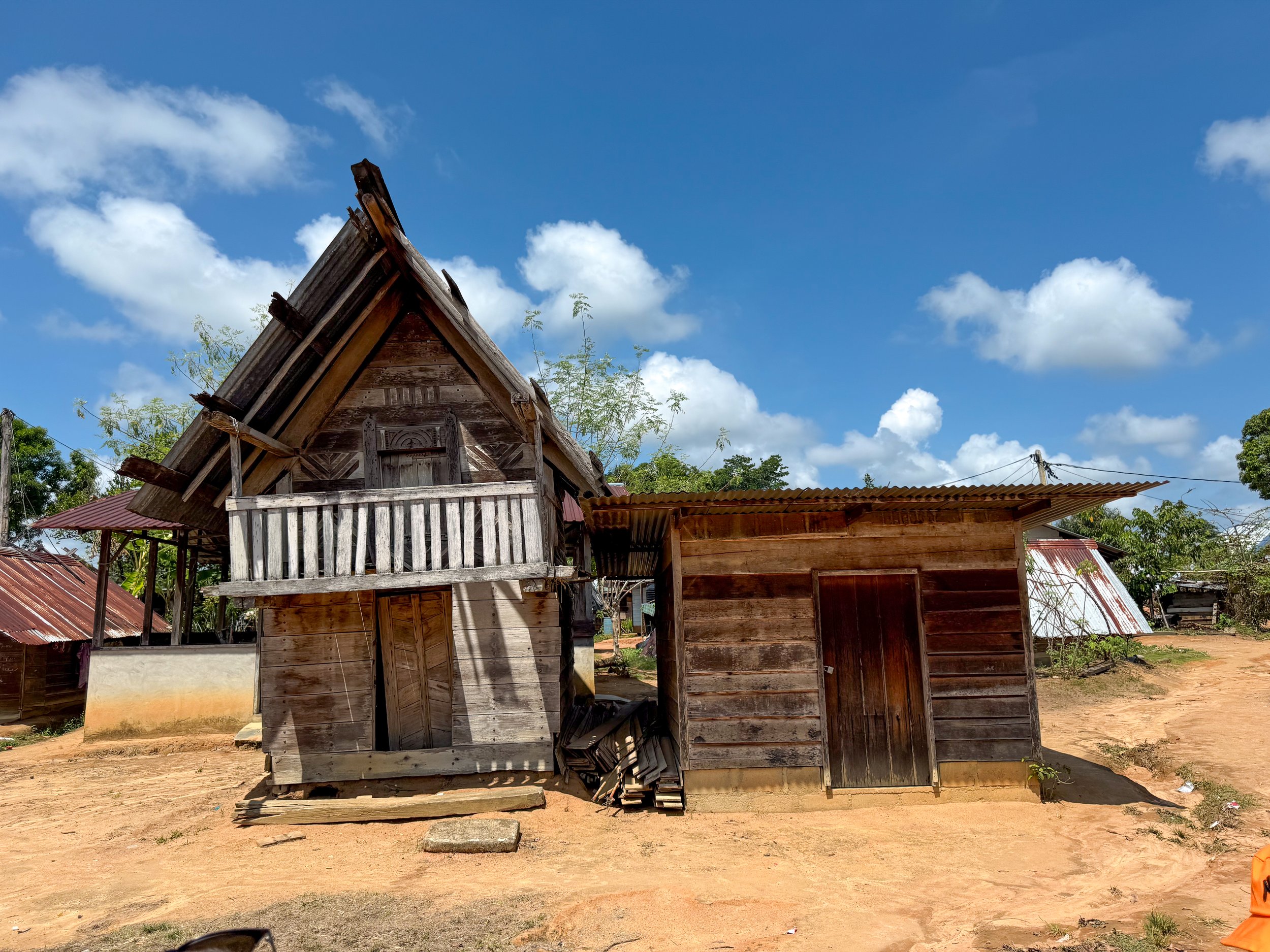
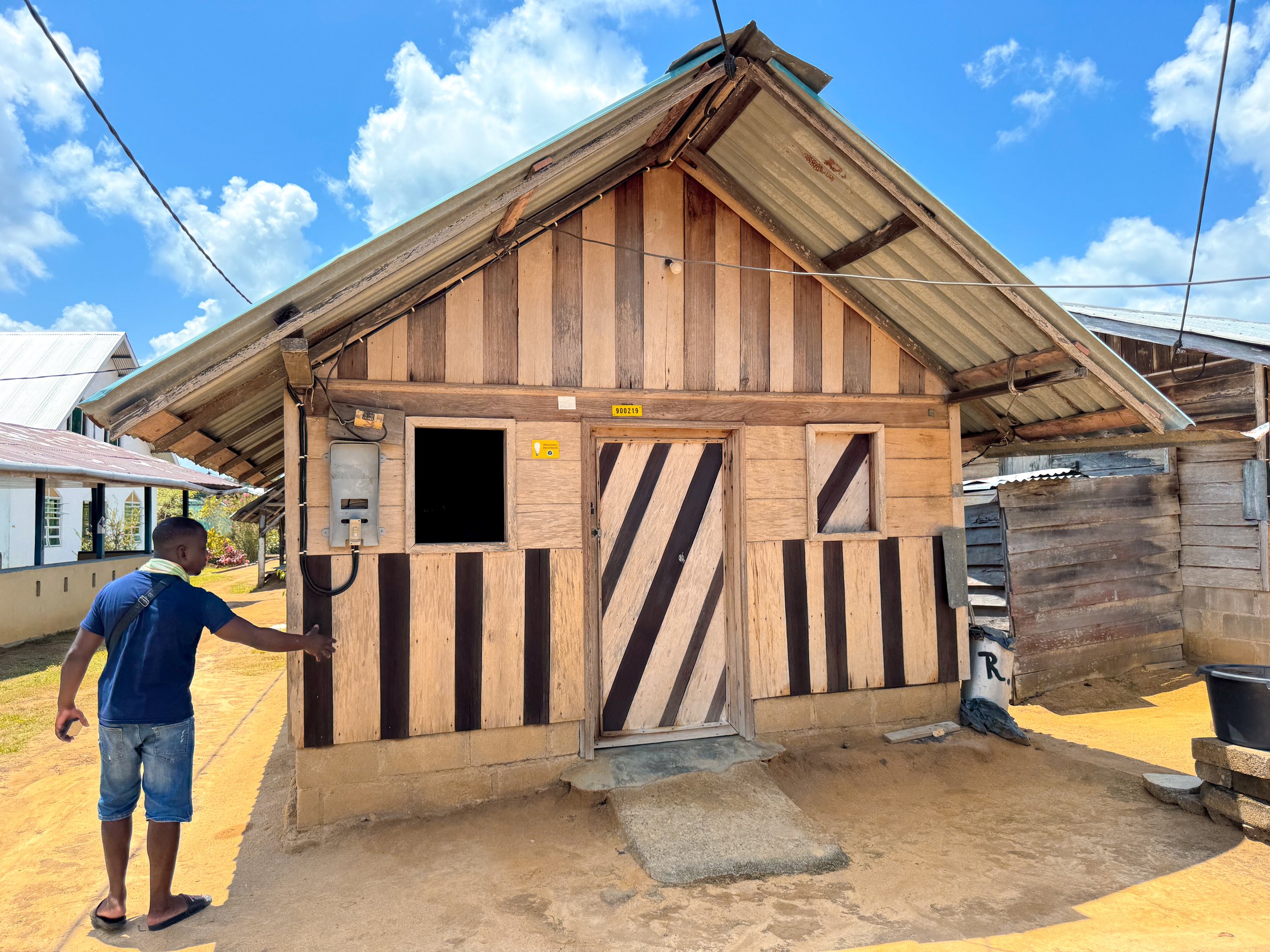
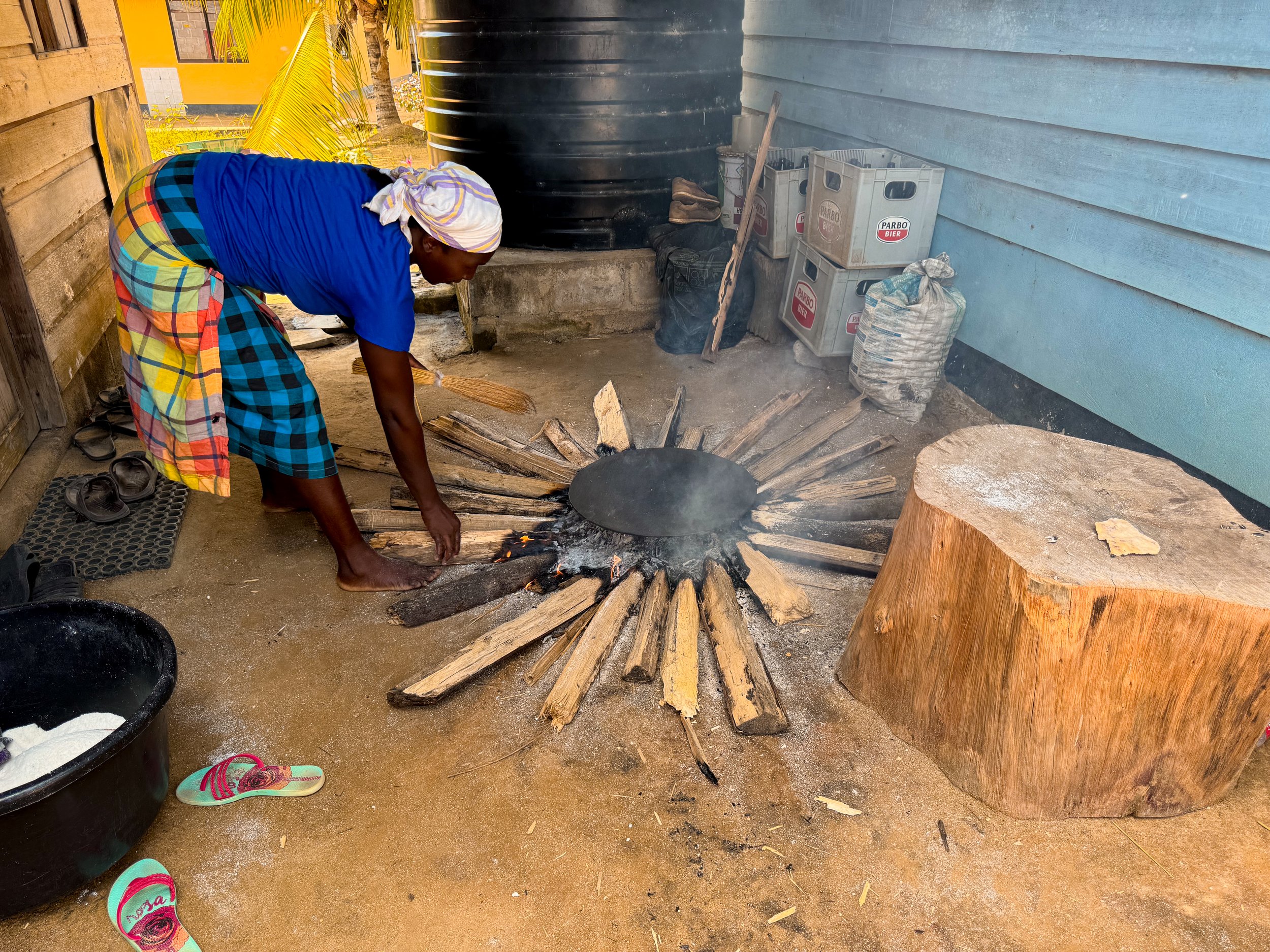
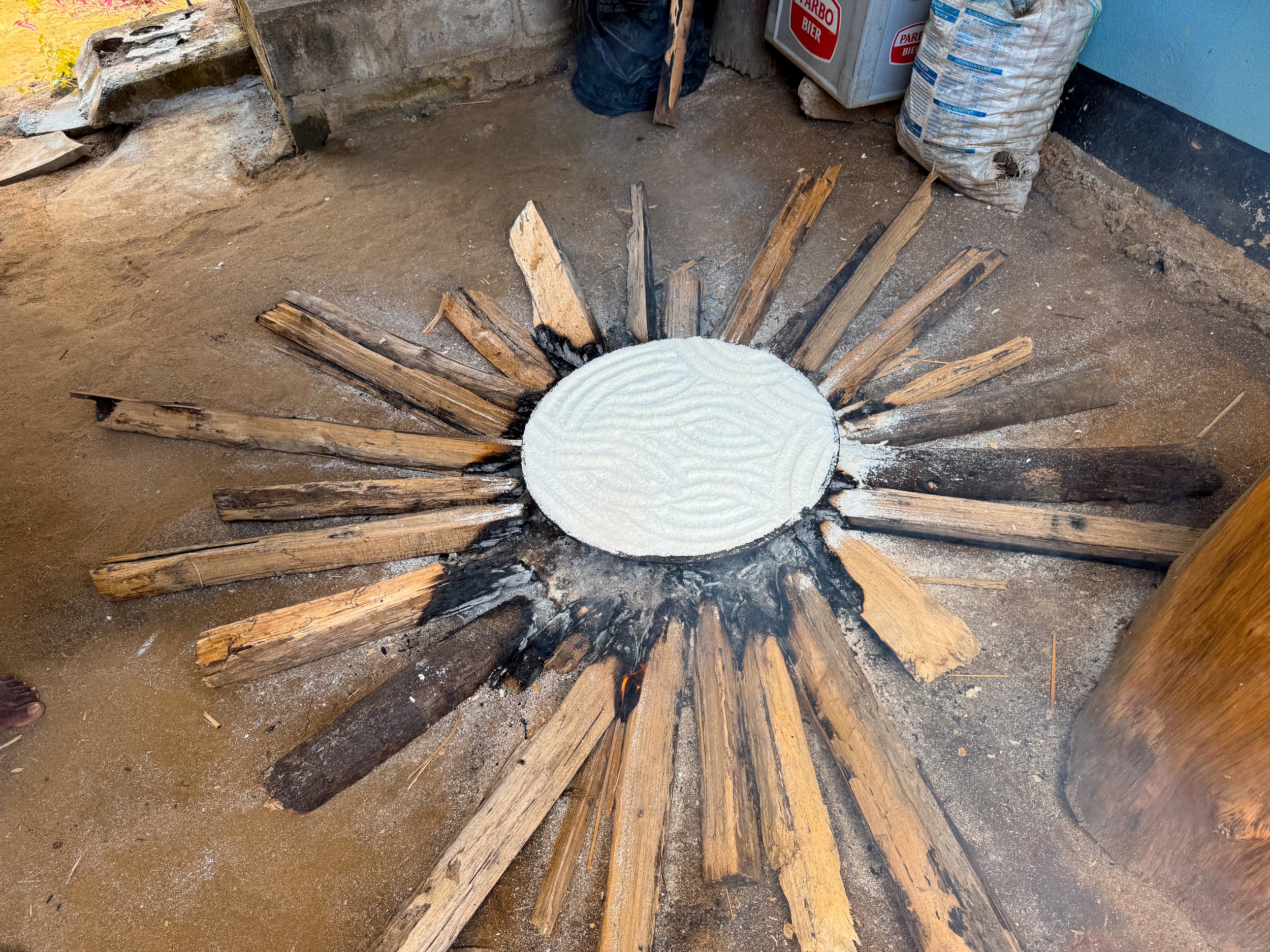

Day 3
Day three was all about the local culture and more relaxation.
The Village Walk
We visited the Village of Ladoani further up the Suriname River. The village is home to the Saamaka, 1 of the 6 Maroon people in the country. The Maroon people are the descendants of enslaved Africans brought to Suriname who have lived upriver for generations. Traveling by canoe, on foot and then by canoe again, we reached the village of nearly 3,000 people.
During our guided village walk, we learned about the village, its people, culture, language and history. The village is comprised of wooden plank houses with tin roofs and dirt pathways, a hospital, school, church and at least two mini marts. Trees producing papaya, coconut, banana, star apple, mango, cashew and breadfruit flourish here while gardens with okra and cassava grow outside of peoples’ homes.
It’s quiet during the day. The men have left to harvest crops, hunt within the jungle and fish further up river. The elders, women, children and young men remain with jobs of their own. Women harvest leaves for bathing, grind cassava to bake bread, wash laundry in the river and roast palm seeds to produce oil. Children play together, learn at school, empty rainwater from canoes and show off their pet parrots while younger men mix concrete to build foundations for new homes.
Relaxation Mode
After retuning for lunch, we spent the remainder of the afternoon napping in hammocks by the river, watching canoes navigate upstream, listening to the flow of the rapids, hum of cicadas and chirping birds. Towards the late afternoon, we migrated to the pool for a snack and a local beer.
Saamaka Performance
After dinner on our final night, we were treated to a cultural dance performance by drummers and dancers from the Ladoani Village. They performed several songs and dances that originated during the plantation era when enslaved Africans would use the performances to distract their oppressors while others escaped. Since then, the Saamaka have continued these performances but for reasons of joy and happiness.
Day 4
Day four involved a relaxing morning in nature before returning to Paramaribo.
The Last Morning At Anaula
We woke up early to listen to the birds as the sun rose followed by a nature walk where we spotted the same family as monkeys from day two. They were feasting on the fruit and nuts of a palm tree near the river. In the early afternoon, we began our scenic and exciting boat ride back to Atjoni where we boarded the bus returning to Paramaribo.
The Cuisine at Anaula
Over the four days at Anaula, we got to taste many Surinamese dishes cooked by the Maroon people as well as dishes brought to Suriname by its culturally diverse population of Indians, Indonesians and Dutch. The kitchen prepared 3 buffet meals a day, a mid afternoon snack and accommodated our pescatarian preference.
Fresh Fruit: Pomelo, watermelon, papaya & banana
Poffertjes: Tiny Dutch pancakes
Roti: Flat bread served with masala eggs, curried potatoes, pureed squash, sautéed eggplant and rice.
Pakabana: Sliced, battered and fried plantains.
Witi Fis: Fried white fish.
Salt Fish: Salted and shredded cod.
Menu Vada. A savory dough flavored with spices and shaped into a donuts.
Nasi. A mixed rice dish, influenced by Indonesian and Chinese cuisine. It can be served with vegetables or meats.
Surinamese Vegetables and Greens:
Sautéed antroewa (white eggplant) and soproro (bitter melon)
Steamed yardlong beans
Boiled white sweet potatoes & cassava
Blanched Kaisoi (a type of spinach)
Okra Soup, cooked with okra and greens
Where to Stay
In Paramaribo, we stayed in a private room at the Twenty4 Hostel. The hostel has communal areas like a reception, kitchen and back patio. They offer simple breakfasts, luggage storage, taxi services and can arrange tours across the country.
Good to Know
Language: Dutch, English, Sranan Tongo and several Maroon languages are commonly spoken.
Currency: Uses the Suriname Dollar. Cash is preferred over credit card.
Credit Cards: Visa is not accepted anywhere. Mastercard is accepted. There is typically a 5% credit card fee.
Tipping: 10% is customary
Drinking Water: Tap water is not safe for consumption unless rapidly boiled for at least one minute. Avoid ice as it’s often frozen tap water.
Climate: Paramaribo is hot and dry during September to October. Make sure to drink plenty of water.
Insects: When in the interior of the country, wear long socks and insect repellant to avoid bites, especially at night time or after the rain.
Driving: People drive on the left side of the road. Cars have their steering wheels on the right side of the car. Speed limits and milage are in km.
LGBTQ+: Though there are some restrictions one LGBTQ+ rights, October is the unofficial Pride month. We saw rainbow and progress flags at embassies, large hotels and WHO buildings.
Visas: We needed to apply for an E-Visa a minimum of 72 hours before visiting Suriname and pay a $59 fee.
Getting Around
Airport Taxi: The airport is located a little over an hour from Paramaribo. Taxis typically cost $50 one way.
On Foot: The city center near most sights is easily walkable.
For Next Time…
One thing we learned in Suriname is that 9 days is hardly enough time. Next time we return, we hope to see more of the interior, coast and even the neighboring countries of Guyana and French Guiana.
Raleighvallen. A scenic and long cascading waterfall deep in the interior.
Voltzberg Dome. A 240 meter granite dome in the middle of the interior. From what we read, it takes two days to reach but has incredible views overlooking the jungle.








